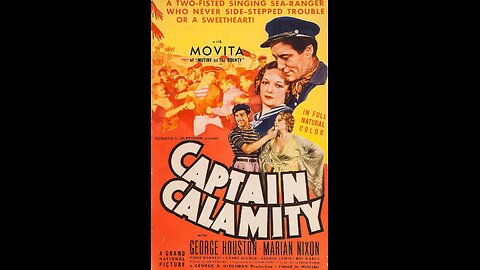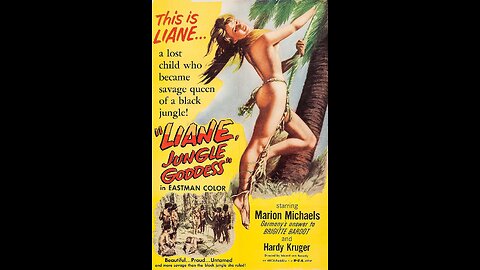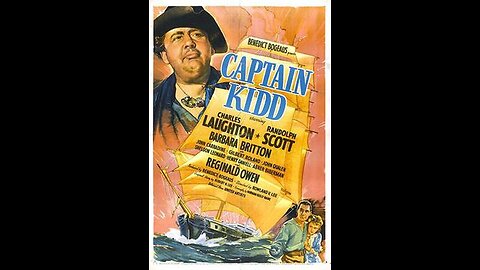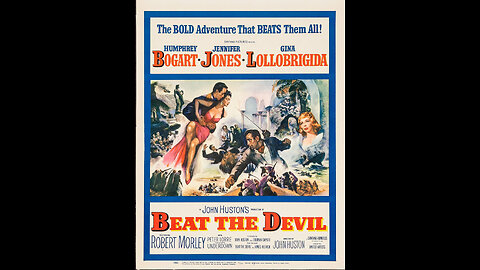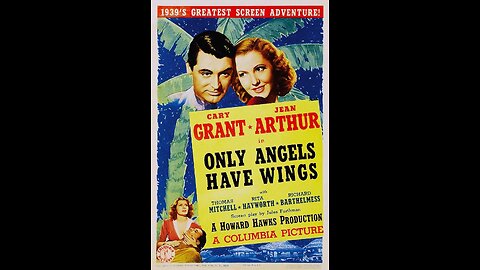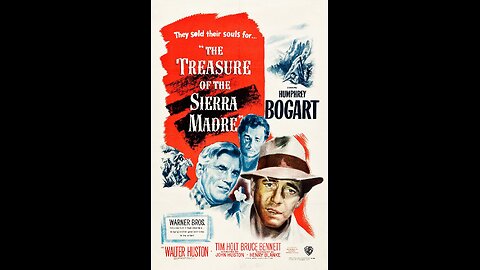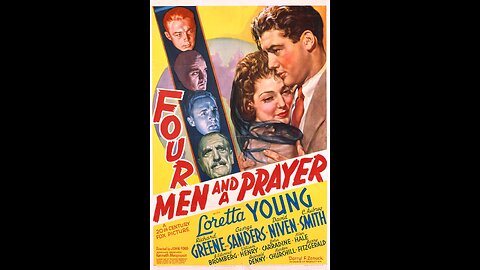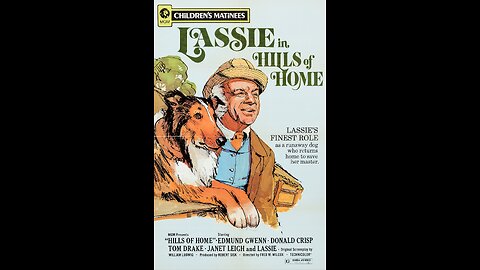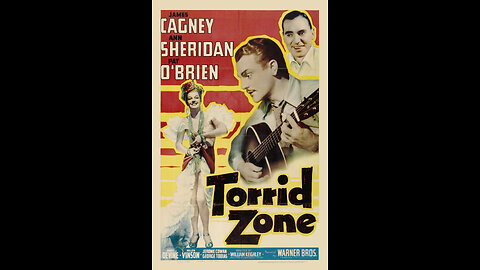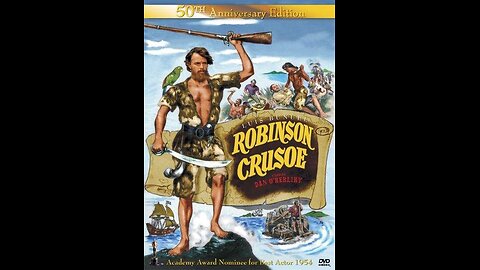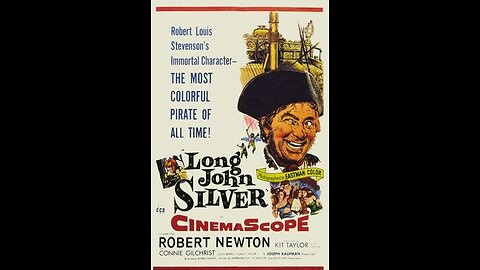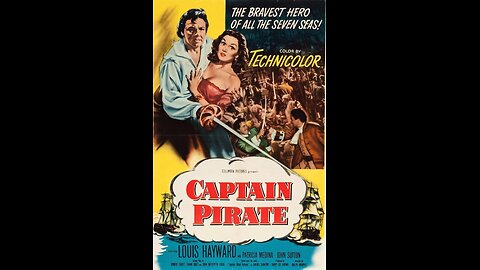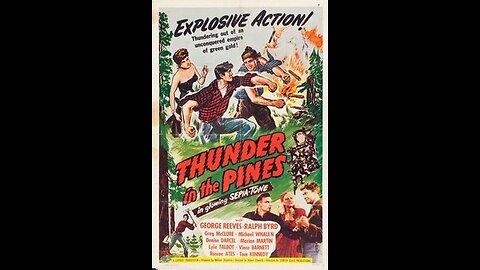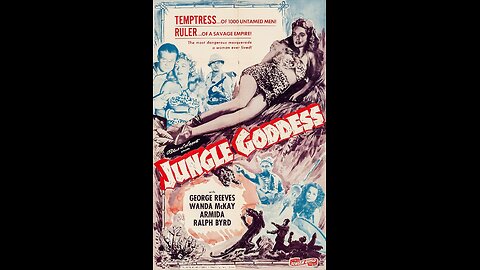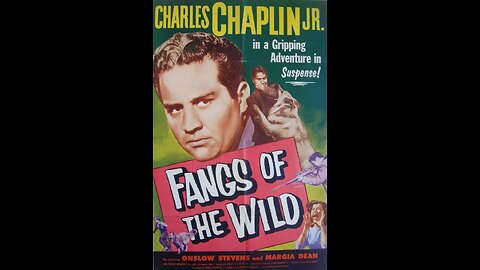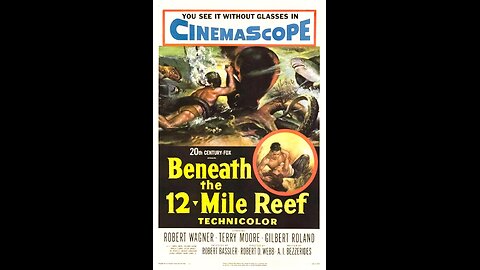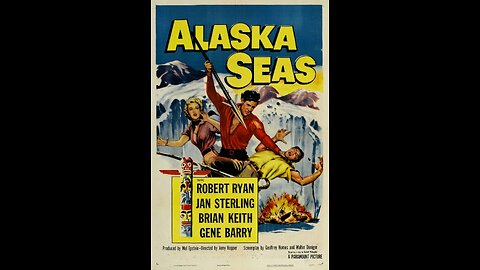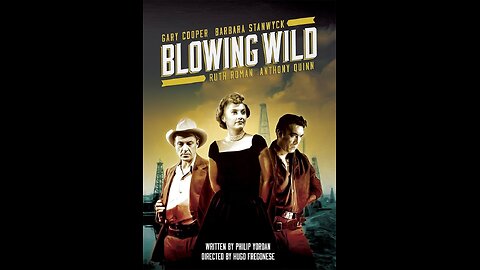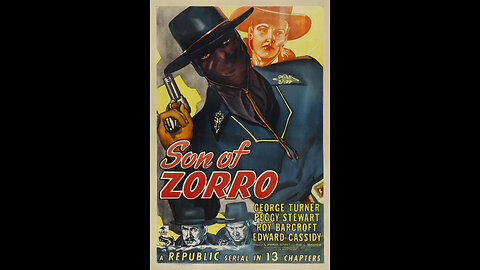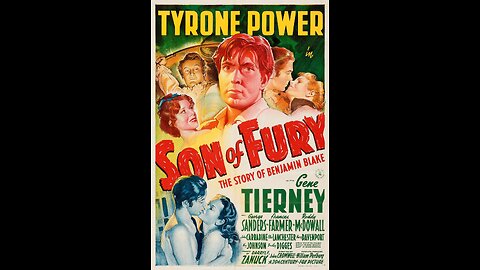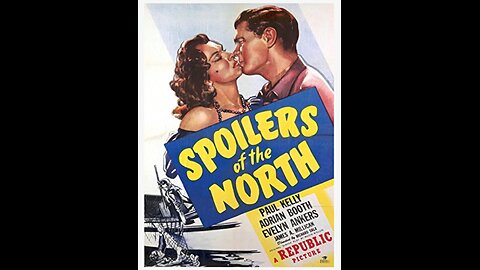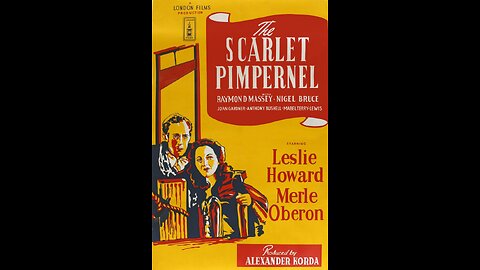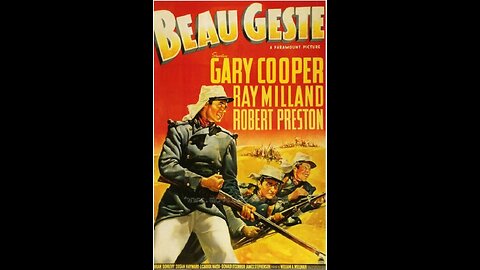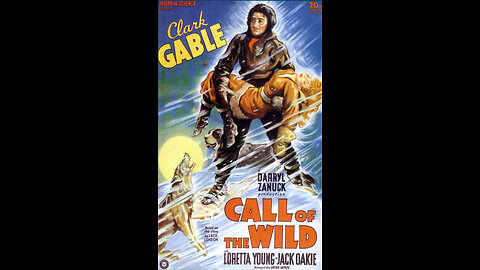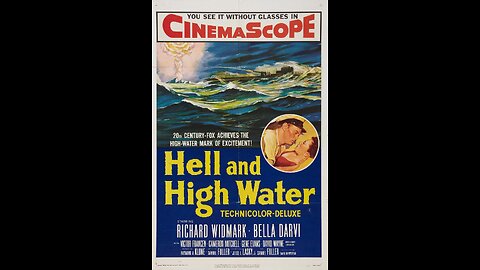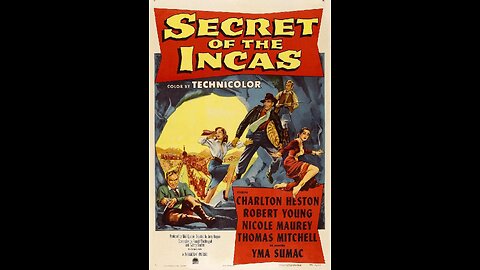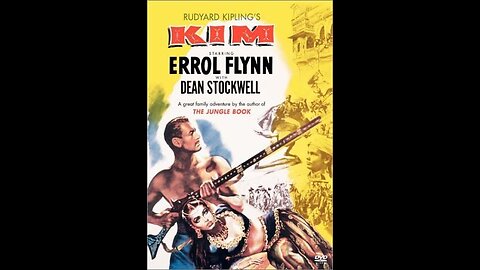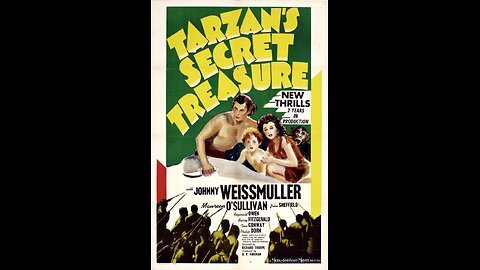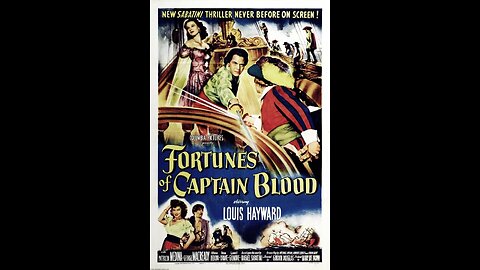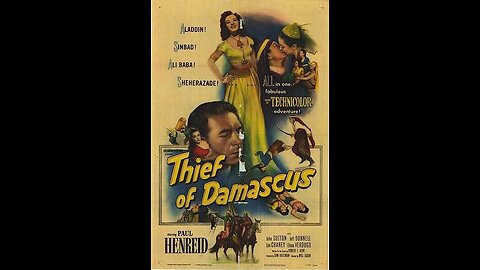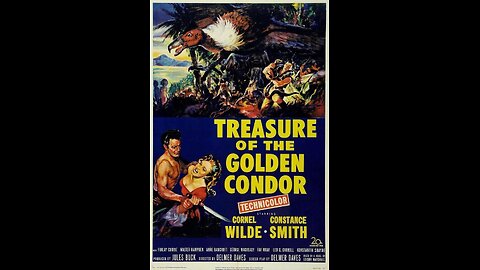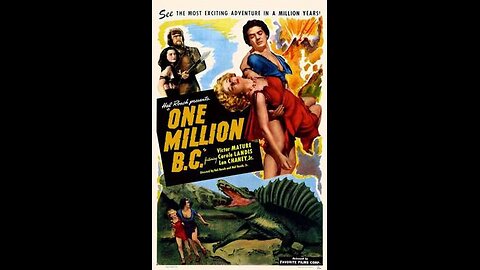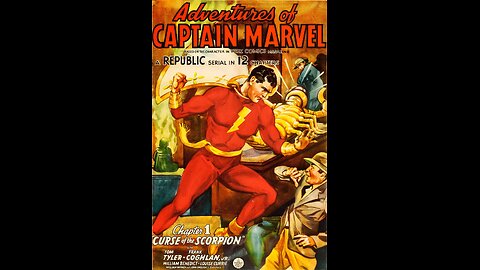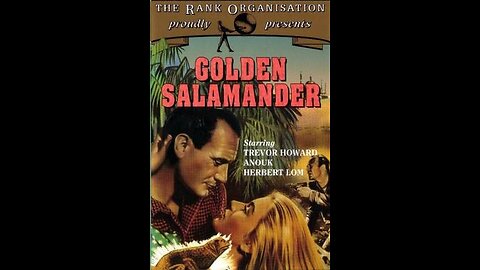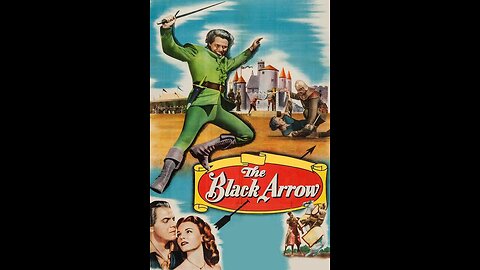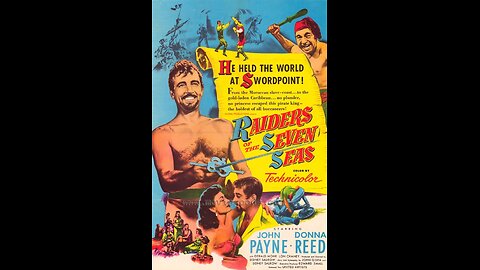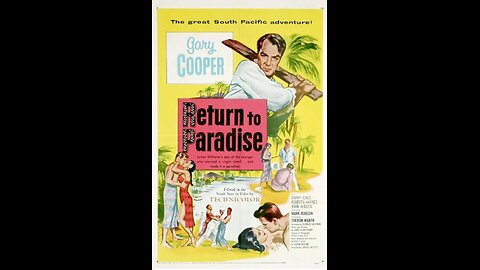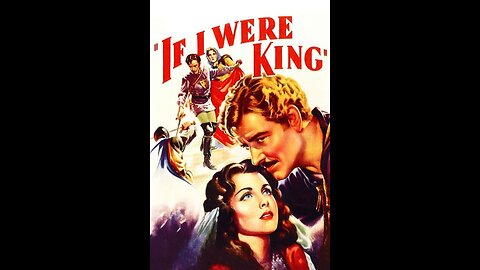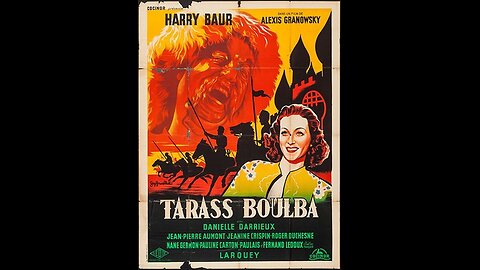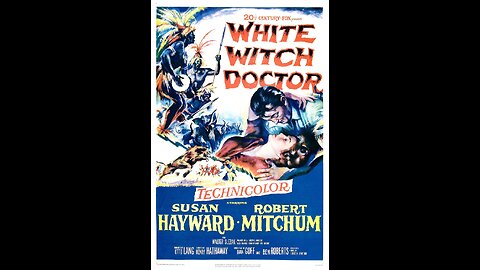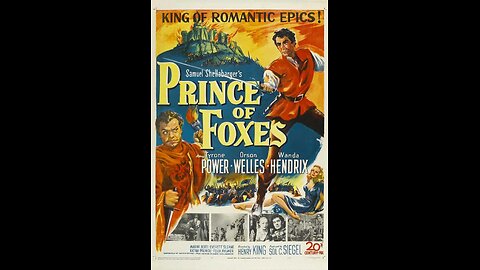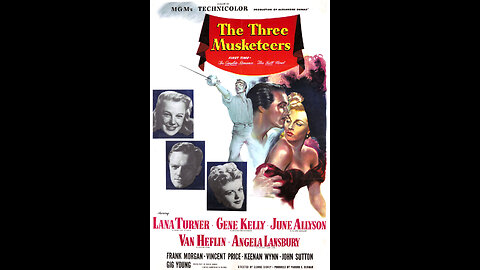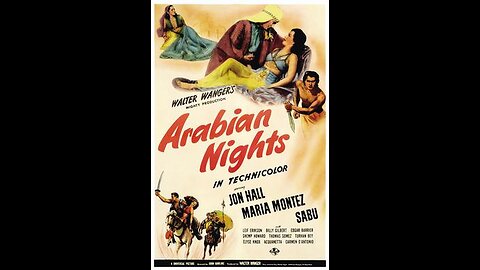Premium Only Content
This video is only available to Rumble Premium subscribers. Subscribe to
enjoy exclusive content and ad-free viewing.

Adventure Classics
Cinema2000
- 25 / 66
1
Captain Calamity (1936) | Directed by John Reinhardt
Classic Films & Movies Archive
Captain Calamity is a South Seas adventure tale centered on a brash skipper who falsely boasts of discovering a sunken treasure. His claims attract criminals, adventurers, and fortune seekers, plunging him into a whirlwind of danger, deception, and high-seas excitement. The film delivers exotic settings, romance, and peril in the tradition of 1930s adventure cinema.
Genre: Adventure, Action, Drama
Director: John Reinhardt
John Reinhardt (1901–1953) was an Austrian-born filmmaker who worked primarily in Hollywood during the 1930s and 1940s. He directed low-budget features across genres, including crime dramas, adventures, and mysteries. Though never achieving A-list recognition, Reinhardt was valued for his ability to create entertaining films with limited resources, often bringing flair to Poverty Row productions.
Star Cast:
George Houston as Captain Calamity
Marian Nixon as Madge Lewis
Movita Castaneda as Annana
Vince Barnett as Benny
Roy D’Arcy as Blackie
Juan Torena as Lalapuna
George Walsh as The Doctor
Captain Calamity was regarded as a colorful but modest adventure film. Audiences enjoyed its exotic setting and action sequences, though critics often noted the limitations of its low-budget production. It became known as a typical Poverty Row adventure picture, appreciated for its escapist qualities rather than artistic depth.
Fun Facts:
The film was shot in two-color Cinecolor, an early color process that gave it a unique look compared to the black-and-white features of its time.
George Houston, who played the title role, was also a trained opera singer before transitioning to acting in adventure and western films.
Movita Castaneda, who appears as Annana, later gained fame for her role in Mutiny on the Bounty (1935) and for being married to Marlon Brando.
Captain Calamity was produced by Grand National Pictures, a small studio that attempted to compete with Hollywood’s major players but folded within a few years.
* This Rumble Movie Channel is comprehensively indexed on https://kinoquick.com - find you favourite movies fast & free!
* Follow this channel to be notified of daily movie updates.
2
Liane Jungle Goddess (1956) | Directed by Eduard von Borsody
Classic Films & Movies Archive
This 1956 German adventure film tells the story of a mysterious young white woman, raised in the African jungle by natives after surviving a shipwreck as a child. She is discovered by an expedition and becomes the subject of fascination and conflict between the civilized world and the wilderness. The film mixes elements of exotic adventure, romance, and exploration, typical of post-war escapist cinema.
Genre: Adventure / Drama
Director: Eduard von Borsody
Eduard von Borsody (1898–1970) was an Austrian filmmaker, screenwriter, and cinematographer who worked extensively in Germany. He began his career as a cinematographer during the silent film era and later transitioned into directing. Known for creating popular entertainment films in the 1930s through the 1950s, he worked across genres, including musicals, melodramas, and adventure films. Liane Jungle Goddess remains one of his best-known works outside Germany due to its international distribution.
Star Cast:
Marion Michael as Liane
Hardy Krüger as Thoren
Peter Mosbacher as Keller
Rolf von Nauckhoff as Professor Danner
Irene Galter as Irene
Rudolf Forster as Von Amelongen
The film was a commercial success in Germany and introduced Marion Michael as a screen sensation, marketed as Germany’s answer to Hollywood’s jungle heroines. It also gained attention abroad, particularly in the United States, where its mix of adventure and exotic imagery appealed to audiences during the 1950s fascination with jungle and lost-civilization films. Critics, however, were divided, with some praising the escapist entertainment and others calling it derivative.
Fun Facts:
Marion Michael, only 17 years old at the time of filming, became an overnight star and was heavily promoted as the "German Brigitte Bardot."
The film sparked two sequels: Liane, die weiße Sklavin (1957) and Liane Jungle Goddess and the Slave Hunters (1961).
Much of the movie was shot on location in Africa, which was unusual for German productions of the time and added authenticity to its visuals.
Hardy Krüger, who played Thoren, went on to an acclaimed international career, appearing in films like Hatari! (1962) and The Flight of the Phoenix (1965).
The film’s success internationally helped re-establish West German cinema in the global market after World War II.
* This Rumble Movie Channel is comprehensively indexed on https://kinoquick.com - find you favourite movies fast & free!
* Follow this channel to be notified of daily movie updates.
1
comment
3
Captain Kidd (1945) | Directed by Rowland V. Lee
Classic Films & Movies Archive
Captain Kidd is a swashbuckling adventure film about the infamous 17th-century pirate who seeks royal favor while secretly plotting treachery. Tasked with escorting a treasure ship for King William III, Kidd schemes to keep the loot for himself, but his deceit leads to double-crossings, mutiny, and eventual downfall.
Genre: Adventure / Historical Drama
Director: Rowland V. Lee
Rowland V. Lee (1891–1975) was an American director, writer, and producer best known for his adventure and historical films. He began as a silent film actor before moving into directing in the 1920s. Lee directed a wide range of films, including The Count of Monte Cristo (1934) and Son of Frankenstein (1939). He was admired for his ability to handle large-scale productions with strong performances and visual flair.
Star Cast:
Charles Laughton as Captain Kidd
Randolph Scott as Adam Mercy
Barbara Britton as Lady Anne Dunstan
Reginald Owen as Cary Shadwell
Gilbert Roland as José Lorenzo
John Qualen as Orange Povey
Sheldon Leonard as Cyprian Boyle
Henry Daniell as King William III
The film was popular with audiences looking for escapist adventure during the post-war years. Charles Laughton’s flamboyant performance as the ruthless pirate captain was widely praised and became one of his most memorable roles. Critics noted that while the historical accuracy was questionable, the film succeeded as lively entertainment. It became a staple of pirate films of the era.
Fun Facts:
Charles Laughton enjoyed the role of Captain Kidd so much that he reprised the character in the 1952 comedy Abbott and Costello Meet Captain Kidd.
The screenplay was loosely based on the real life of William Kidd, though heavily dramatized for adventure.
Randolph Scott, known mainly for his westerns, added to his range with his heroic turn as Adam Mercy.
The film was produced by Benedict Bogeaus Productions and distributed by United Artists, marking an independent production with major studio reach.
Some exterior scenes were filmed on elaborate ship sets that gave the production a grand, high-seas atmosphere despite budgetary limitations.
* This Rumble Movie Channel is comprehensively indexed on https://kinoquick.com - find you favourite movies fast & free!
* Follow this channel to be notified of daily movie updates.
4
Beat the Devil (1953) | Directed by John Huston
Classic Films & Movies Archive
"Beat the Devil" is a satirical adventure-comedy film that follows a group of eccentric characters who become entangled in a scheme to claim uranium-rich land in Africa. Set largely in Italy, the story unfolds with dry humor and a sense of irony, as the group awaits passage aboard a ship while contending with double-crosses, bureaucracy, and each other’s deceit.
Genre: Adventure, Comedy, Crime
Director: John Huston
John Huston was an influential American director, screenwriter, and actor, renowned for his work on films like "The Maltese Falcon" (1941), "The Treasure of the Sierra Madre" (1948), and "The African Queen" (1951). Known for his strong narratives, character depth, and innovative cinematic techniques, Huston was a prominent figure of classic Hollywood, often collaborating with major stars and writers of his time.
Star Cast:
* Humphrey Bogart as Billy Dannreuther
* Jennifer Jones as Gwendolen Chelm
* Gina Lollobrigida as Maria Dannreuther
* Robert Morley as Peterson
* Peter Lorre as Julius O’Hara
* Edward Underdown as Harry Chelm
Upon release, "Beat the Devil" received mixed reviews. Audiences were unsure how to respond to its offbeat, parodic tone, especially given the expectations set by its all-star cast. Over time, however, the film gained a cult following for its dry wit and subversive take on the adventure genre. Critics later came to appreciate its self-aware style and clever screenplay.
Fun Facts:
* The screenplay was co-written by Truman Capote and John Huston, with much of the script written during filming, leading to an improvised and freewheeling feel.
* The film was intended as a spoof of traditional adventure films like "The Maltese Falcon" and "Casablanca," both of which starred Bogart.
* Humphrey Bogart partially financed the film through his production company, Santana Pictures.
* During filming in Italy, Bogart had a car accident and lost several teeth, affecting some of his dialogue delivery; a British actor dubbed some of his lines.
* The film’s title is never explained within the story, adding to its quirky, irreverent charm.
* This Rumble Movie Channel is comprehensively indexed on https://kinoquick.com - find you favourite movies fast & free!
* Follow this channel to be notified of daily movie updates.
5
Only Angels Have Wings (1939) | Directed by Howard Hawks
Classic Films & Movies Archive
"Only Angels Have Wings" is an American adventure drama set in a fictional South American port town. The story centers on a group of mail pilots who risk their lives flying treacherous routes over the Andes. The arrival of a showgirl and a mysterious pilot with a troubled past tests the bonds between the men and challenges their code of honor.
Genre: Adventure, Drama, Romance
Director: Howard Hawks
Howard Hawks was a prolific American filmmaker known for his versatility across genres including comedies, film noir, westerns, and war dramas. Born in 1896, Hawks had a reputation for crafting sharp dialogue, strong female characters, and tight ensemble casts. His influence shaped classic Hollywood cinema, and his directorial career spanned more than four decades with films such as "Bringing Up Baby", "His Girl Friday", "Red River", and "The Big Sleep".
Star Cast:
* Cary Grant as Geoff Carter
* Jean Arthur as Bonnie Lee
* Richard Barthelmess as Bat MacPherson
* Rita Hayworth as Judy MacPherson
* Thomas Mitchell as Kid Dabb
* Noah Beery Jr. as Joe Souther
* Sig Ruman as Dutchy
Upon its release, "Only Angels Have Wings" received critical acclaim for its direction, performances, and atmospheric storytelling. Cary Grant’s performance was especially praised, and Jean Arthur’s role brought a combination of humor and emotion. The film was recognized for its realism in portraying the dangers of aviation, and it earned a nomination for Best Special Effects at the Academy Awards. Over time, the film has been acknowledged as one of Hawks’ masterpieces and is considered a classic of 1930s American cinema.
Fun Facts:
* The film marked an early prominent role for Rita Hayworth, helping launch her Hollywood stardom.
* Howard Hawks, a licensed pilot himself, drew from real-life aviation stories and experiences for the screenplay.
* Cary Grant’s character was based loosely on several airmail pilots Hawks had known.
* The realistic flight sequences were achieved using scale models and innovative effects for the time.
* The character dynamics and themes of loyalty and professionalism would become trademarks in later Hawks films.
* Though not a major box office hit initially, the film gained prestige through critical reappraisal and remains a favorite among film historians and directors.
* This Rumble Movie Channel is comprehensively indexed on https://kinoquick.com - find you favourite movies fast & free!
* Follow this channel to be notified of daily movie updates.
6
Treasure of the Sierra Madre (1948) | Directed by John Huston
Classic Films & Movies Archive
Treasure of the Sierra Madre is a gripping tale of greed, paranoia, and survival. Set in 1920s Mexico, the film follows two down-and-out Americans, Fred C. Dobbs and Bob Curtin, who join an old prospector, Howard, in a quest to find gold in the Sierra Madre mountains. What begins as a partnership slowly unravels as suspicion and avarice take hold.
Genre: Adventure, Drama, Western
Director: John Huston
John Huston was one of the most celebrated directors of Hollywood’s Golden Age, known for his rugged storytelling and powerful character studies. He directed classics such as The Maltese Falcon, The African Queen, and The Man Who Would Be King. Huston was also an accomplished screenwriter and actor, and he won two Academy Awards for his work on Treasure of the Sierra Madre—one for Best Director and another for Best Screenplay.
Star Cast:
Humphrey Bogart as Fred C. Dobbs
Walter Huston as Howard
Tim Holt as Bob Curtin
Bruce Bennett as James Cody
Barton MacLane as Pat McCormick
The film was critically acclaimed upon release and is now considered one of the greatest films in American cinema. Humphrey Bogart's descent into madness was hailed as one of his finest performances. Walter Huston, the director’s father, won the Academy Award for Best Supporting Actor. The film resonated deeply with audiences for its raw portrayal of human nature and moral collapse under pressure.
Fun Facts:
* The film was one of the first Hollywood productions to be filmed extensively on location outside the United States, with much of it shot in Mexico.
* John Huston cast his father, Walter Huston, in the role of Howard, which won him his only Oscar.
* The famous line "Badges? We don't need no stinkin' badges!" is often misquoted but became a pop culture reference.
* The film faced resistance from the studio, which was hesitant about its dark themes and lack of female lead, but it ultimately became a critical and box-office success.
* This Rumble Movie Channel is comprehensively indexed on https://kinoquick.com - find you favourite movies fast & free!
* Follow this channel to be notified of daily movie updates.
7
Four Men and a Prayer (1938) | Directed by John Ford
Classic Films & Movies Archive
"Four Men and a Prayer" is a globe-trotting adventure drama in which four brothers, sons of a British Army officer, band together to clear their father's name after he is accused of dereliction of duty and subsequently murdered. Their quest for justice and truth takes them across continents—from India and South America to Egypt—as they unravel a conspiracy tied to international arms dealing and war profiteering.
Genre: Adventure, Drama, Mystery
Director: John Ford
John Ford was a seminal figure in American cinema, known for his mastery of visual storytelling and his extensive body of work across genres, particularly Westerns. Born in 1894 in Maine, Ford began directing silent films in the 1910s and went on to become one of Hollywood's most respected directors. He won four Academy Awards for Best Director, a record that still stands. Ford’s films often dealt with themes of honor, community, and the American identity, and he was known for his collaborations with actors like John Wayne and Henry Fonda.
Star Cast:
* Loretta Young as Lynn Cherrington
* Richard Greene as Geoffrey Leigh
* George Sanders as Wyatt Leigh
* David Niven as Christopher Leigh
* C. Aubrey Smith as Col. Loring Leigh
* William Henry as Rodney Leigh
* Alan Hale as Mr. Furnoy
* Barry Fitzgerald as Timothy
Upon its release, "Four Men and a Prayer" received generally positive reviews for its brisk pacing, exotic locations, and the charm of its leading men. Critics appreciated John Ford's direction and the film's ambitious, globe-spanning narrative. However, some reviews noted that the storyline occasionally lacked cohesion due to its wide geographical scope. The movie was considered a modest commercial success and was praised for its timely themes during the interwar period.
Fun Facts:
* The film was shot on location in several international spots including India and South America, which was relatively uncommon for the time.
* "Four Men and a Prayer" is one of the few John Ford films that does not feature his frequent collaborator John Wayne.
* David Niven was still early in his career at this point, and this role helped solidify his status as a rising British star in Hollywood.
* The movie’s theme of global conspiracy and arms dealing foreshadowed the concerns that would arise with the onset of World War II just a year later.
* This Rumble Movie Channel is comprehensively indexed on https://kinoquick.com - find you favourite movies fast & free!
* Follow this channel to be notified of daily movie updates.
8
Lassie in Hills of Home (1948) | Directed by Fred M. Wilcox
Classic Films & Movies Archive
Lassie in Hills of Home is a sentimental drama centered around the beloved collie, Lassie, who is taken in by a kind-hearted Scottish doctor. The story unfolds in the scenic countryside of Scotland, where Lassie becomes part of the doctor's life and helps bridge emotional gaps in a small rural community. When the aging doctor faces health issues, Lassie must overcome her fear of water to save him, reinforcing the theme of loyalty and courage.
Genre: Family, Drama, Adventure
Director: Fred M. Wilcox
Fred M. Wilcox was an American film director known for his work on family-oriented films and science fiction. He was born in 1907 and directed a number of successful MGM pictures. He is perhaps best known for directing the classic sci-fi film Forbidden Planet (1956) and several Lassie features. Wilcox had a knack for eliciting emotional performances and for working with animal actors in compelling ways.
Star Cast:
- Donald Crisp as Dr. William MacLure
- Janet Leigh as Margit Mitchell
- Edmund Gwenn as Dr. Angus McFarland
- Tom Drake as Tammas Milton
- Rhys Williams as Saunders
- Lassie as Herself
Audiences in the late 1940s responded warmly to Lassie in Hills of Home, especially fans of the Lassie series. The film was praised for its wholesome values, picturesque cinematography, and emotional storytelling. Donald Crisp's performance as the kindly doctor was noted for its depth and warmth. Although some critics viewed the film as formulaic, it was generally well-received by families and continued Lassie's popularity in American culture.
Fun Facts:
- This was the fourth film in MGM’s Lassie series.
- Lassie was played by a male dog named Pal, who portrayed Lassie in all the original films.
- The movie was based on a short story titled "Wee MacGregor" by Ian MacLaren.
- The film features early work by Janet Leigh, who would later become a major Hollywood star.
- The Scottish setting was recreated on American studio lots and nearby countryside, with great care taken to imitate the Highlands' look.
* This Rumble Movie Channel is comprehensively indexed on https://kinoquick.com - find you favourite movies fast & free!
* Follow this channel to be notified of daily movie updates.
9
Torrid Zone (1940) | Directed William Keighley
Classic Films & Movies Archive
Torrid Zone is a fast-paced action-comedy set on a Central American banana plantation, where danger, romance, and revolution simmer under the tropical sun. The story revolves around tough-as-nails foreman Nick Butler, who is reluctantly coaxed out of retirement to restore order after labor unrest and sabotage threaten operations. Complicating matters is wisecracking showgirl Lee Donley, whose presence sparks romantic tension, and a revolutionary agitator stirring trouble in the region. The film blends snappy dialogue, political intrigue, and jungle adventure with a dose of screwball humor.
Genre: Adventure / Comedy / Drama
Director: William Keighley
William Keighley was an American director best known for his work in the 1930s and 1940s, particularly at Warner Bros. Originally a stage actor, Keighley transitioned into directing and became known for his polished, efficient style. He directed a mix of crime dramas, comedies, and adventure films, often working with the studio’s biggest stars. His skill at balancing action with character-driven storytelling made him a reliable hand for genre pictures like *Torrid Zone*.
Star Cast:
* James Cagney as Nick Butler
* Ann Sheridan as Lee Donley
* Pat O’Brien as Steve Case
* Andy Devine as Wally Davis
* George Reeves as Sancho
* Jerome Cowan as Rosario La Mata
Torrid Zone was well received for its energetic pacing and the electric chemistry between James Cagney and Ann Sheridan. Critics praised its sharp banter, exotic setting, and blend of political tension and comedic elements. Audiences of the time enjoyed the escapism and lively performances, particularly Cagney’s swaggering charm and Sheridan’s smart, sultry portrayal. The film reinforced Cagney's reputation as a dynamic leading man and Sheridan’s growing popularity as a Warner Bros. leading lady.
Fun Facts:
* The film reunited James Cagney and Pat O’Brien, frequent co-stars and close friends off-screen, known for their lively on-screen camaraderie.
* Ann Sheridan, often nicknamed “The Oomph Girl,” brought both wit and allure to her role, which helped cement her status as one of the era’s top female stars.
* Though set in a fictional Central American country, the film was shot entirely on studio sets in California, with jungle foliage and plantation settings created on the Warner Bros. backlot.
* The character of Rosario La Mata was loosely inspired by Latin American revolutionary figures, though heavily fictionalized for dramatic effect.
* Torrid Zone offered a lighter, more humorous take on the kind of banana republic politics that would later be explored more seriously in films and literature.
* This Rumble Movie Channel is comprehensively indexed on https://kinoquick.com - find you favourite movies fast & free!
* Follow this channel to be notified of daily movie updates.
2
comments
10
Robinson Crusoe (1954) | Directed by Luis Buñuel
Classic Films & Movies Archive
Robinson Crusoe is an adventure drama film that adapts Daniel Defoe's classic 1719 novel. The narrative follows Robinson Crusoe, a British aristocrat who, after a shipwreck, finds himself stranded on a deserted island. Over the course of 28 years, Crusoe survives by salvaging supplies from the wreck, domesticating animals, and cultivating the land. His solitude is interrupted when he encounters Friday, a native man escaping from cannibals. The film delves into themes of survival, companionship, and the human spirit's resilience.
Genre: Adventure, Drama
Director: Luis Buñuel
Luis Buñuel was a Spanish filmmaker renowned for his contributions to surrealist cinema. Born in 1900, Buñuel's career spanned nearly five decades, during which he directed influential films such as "Un Chien Andalou" (1929) and "Belle de Jour" (1967). Known for his avant-garde style and exploration of themes like religion, sexuality, and human irrationality, Buñuel is celebrated as one of the most significant directors in cinematic history.
Star Cast:
- Dan O'Herlihy as Robinson Crusoe
- Jaime Fernández as Friday
- Felipe de Alba as Captain Oberzo
- Chel López as Bosun
- José Chávez as Pirate
Upon its release, "Robinson Crusoe" received critical acclaim for its compelling storytelling and O'Herlihy's performance. The film was Buñuel's most successful U.S. release until "Belle de Jour" in 1967. It holds a 100% approval rating on Rotten Tomatoes, indicating universal praise.
Fun Facts:
- Dan O'Herlihy received an Academy Award nomination for Best Actor for his role as Robinson Crusoe.
- The film was shot on location near Manzanillo, Mexico, providing authentic tropical scenery.
- "Robinson Crusoe" was Buñuel's first color film and one of his few English-language projects.
- The film won six Ariel Awards in Mexico, including Best Picture and Best Director.
- Buñuel's adaptation is noted for its psychological depth, focusing on Crusoe's mental state during his isolation.
* This Rumble Movie Channel is comprehensively indexed on https://kinoquick.com - find you favourite movies fast & free! Subscribe to this channel to be notified of daily movie updates.
11
Long John Silver (1954) | Directed by Byron Haskin
Classic Films & Movies Archive
Long John Silver is an adventure film that serves as a sequel to Robert Louis Stevenson's "Treasure Island." The story follows the cunning pirate Long John Silver, who, after the events of the original tale, learns that his former shipmate, Jim Hawkins, has been kidnapped by a rival pirate, Captain Mendoza. Silver embarks on a daring mission to rescue Jim and uncover more treasure, facing perilous challenges and treacherous adversaries along the way.
Genre: Adventure
Director: Byron Haskin
Byron Haskin was an American film director and special effects artist, born in 1899. He began his career in the early days of cinema, working on visual effects for films like "The War of the Worlds" (1953). Transitioning to directing, Haskin helmed various adventure and science fiction films, including Disney's "Treasure Island" (1950), where he first collaborated with Robert Newton as Long John Silver. Haskin's expertise in visual storytelling made him a notable figure in mid-20th-century cinema.
Star Cast:
- Robert Newton as Long John Silver
- Kit Taylor as Jim Hawkins
- Connie Gilchrist as Purity Pinker
- Lloyd Berrell as Captain Mendoza
- Grant Taylor as Patch
- Rod Taylor as Israel Hands
Upon its release, "Long John Silver" received mixed reviews. Audiences appreciated Robert Newton's charismatic reprisal of the titular role, which had become iconic since his portrayal in Disney's "Treasure Island." However, critics noted that the film's plot lacked the depth and excitement of its predecessor. Despite these critiques, the film gained a following, particularly among fans of pirate adventures, and led to a television series continuation.
Fun Facts:
- Robert Newton's portrayal of Long John Silver is credited with popularizing the stereotypical pirate accent, characterized by rolling "r"s and phrases like "Arrr, matey!"
- The film was shot in Australia, primarily at Sydney's Pagewood Studios, marking one of the earliest international film productions in the country.
- Following the movie, a 26-episode television series titled "The Adventures of Long John Silver" was produced, with Newton reprising his role.
- This film marked one of the early screen appearances of Rod Taylor, who would later become a prominent Hollywood actor, known for films like "The Time Machine" (1960) and "The Birds" (1963).
* This Rumble Movie Channel is comprehensively indexed on https://kinoquick.com - find you favourite movies fast & free! Subscribe to this channel to be notified of daily movie updates.
12
Spy Hunt (1950) | American adventure film directed by George Sherman
Classic Films & Movies Archive
"Spy Hunt" is a 1950 American adventure film directed by George Sherman. This espionage thriller combines elements of mystery, action, and suspense.
The story revolves around a high-stakes game of international espionage during the post-World War II era. The central character is Mike O'Reilly (Howard Duff), an American G.I. stationed in London. Mike, a former intelligence officer, is reluctantly drawn back into the world of espionage when he becomes entangled in a web of intrigue.
The narrative kicks into high gear when Mike's friend and fellow intelligence agent, Peter Heinz (Tom Conway), is murdered. Determined to uncover the truth behind Peter's death, Mike embarks on a perilous journey that takes him across Europe. As he delves deeper into the investigation, he discovers a complex conspiracy involving spies, double-crosses, and a nefarious plot that could have serious global consequences.
Along the way, Mike encounters various characters, some of whom may be allies, while others could be working for the enemy. The film keeps audiences on the edge of their seats as Mike navigates a world filled with deception, danger, and unexpected twists.
Key Themes:
1. Post-War Espionage: Set against the backdrop of the post-World War II era, "Spy Hunt" explores the lingering tensions and covert operations that characterized the early Cold War period.
2. Intrigue and Suspense: The film is built on a foundation of mystery and suspense, with the protagonist unraveling a complex conspiracy that goes beyond the surface.
3. Betrayal and Loyalty: Themes of betrayal and loyalty are central to the narrative, as characters grapple with conflicting allegiances and hidden agendas.
Production and Reception:
"Spy Hunt" showcases the directorial skills of George Sherman, known for his work in various genres, including Westerns and action films. The film benefits from a taut screenplay and a charismatic lead performance by Howard Duff.
While not necessarily a blockbuster, "Spy Hunt" provides an engaging and entertaining experience for fans of espionage thrillers. Its release during a time of heightened Cold War tensions adds an extra layer of relevance to its themes. The film is a testament to the popularity of spy-themed narratives in the post-war Hollywood landscape.
13
The Snows of Kilimanjaro (1952) | American adventure film directed by Henry King
Classic Films & Movies Archive
"The Snows of Kilimanjaro" is a 1952 American adventure film directed by Henry King, based on the short story of the same name by Ernest Hemingway. The film features Gregory Peck in the lead role, alongside Susan Hayward, Ava Gardner, and Hildegard Knef.
Plot Summary:
The film follows the character of Harry Street, played by Gregory Peck, a renowned writer who finds himself on an African safari with his wealthy wife Helen (Susan Hayward). While on the expedition, Harry suffers a severe leg injury and becomes gravely ill due to an infection.
As Harry lies in his tent, awaiting rescue, he reflects on his life and past experiences. Flashbacks reveal his romantic relationships, adventures, and the choices that have shaped his existence. One of the significant memories is his love affair with Cynthia Green (Ava Gardner), a past lover who deeply impacted his life.
Amid the breathtaking landscapes of Africa and the looming presence of Mount Kilimanjaro, Harry confronts his mortality, regrets, and unfulfilled dreams. The film explores themes of love, regret, and the fleeting nature of life, with the majestic mountain serving as a powerful symbol.
Key Themes:
1. Regret and Redemption: The narrative revolves around Harry's reflections on his life, highlighting moments of regret and the possibility of redemption as he faces his mortality.
2. Love and Loss: Flashbacks depict Harry's romantic entanglements, particularly his relationship with Cynthia Green, illustrating the complex interplay of love and loss.
3. African Adventure: The film captures the beauty of the African landscape and the challenges of an African safari, providing a visually stunning backdrop to the emotional and introspective storyline.
Production and Reception:
"The Snows of Kilimanjaro" received critical acclaim for its performances, cinematography, and emotional depth. Gregory Peck's portrayal of Harry Street was praised for its complexity and nuance.
The film's adaptation of Hemingway's work led to success at the box office, making it one of the notable cinematic interpretations of the author's stories. The collaboration between Peck and director Henry King resulted in a compelling exploration of human emotions set against the majestic and unforgiving backdrop of Kilimanjaro.
Overall, "The Snows of Kilimanjaro" remains a classic film that combines adventure, romance, and introspection, offering a poignant exploration of life's regrets and the quest for meaning.
14
Sea Devils (1953) | British-American adventure film directed by Raoul Walsh
Classic Films & Movies Archive
"Sea Devils" is a 1953 British-American adventure film directed by Raoul Walsh. Set against the backdrop of naval action during the Napoleonic Wars, the film combines elements of swashbuckling adventure, romance, and maritime drama. Here's a detailed description of the movie:
Plot Summary:
The film is set in the early 19th century, during the Napoleonic Wars. The story follows Captain Rawson (Rock Hudson), an officer in the British Royal Navy, who is given a daring mission. His task is to infiltrate a group of pirates led by the notorious Captain Ben Widgeon (Denis O'Dea) and thwart their plans to aid Napoleon's forces.
To accomplish this dangerous mission, Rawson recruits a motley crew of skilled sailors and experts in underwater operations. Among them is the charismatic and resourceful Gilliatt (Yvonne De Carlo), who becomes a key ally in their quest. As Rawson and his crew navigate treacherous waters and face the challenges posed by both the French and the pirate threat, alliances are tested, and loyalties are put to the ultimate test.
The film is known for its thrilling sea battles, daring rescues, and underwater escapades. The characters find themselves entangled in a web of political intrigue, romance, and high-stakes naval warfare.
Key Themes:
1. Adventure and Swashbuckling: "Sea Devils" embraces the spirit of classic swashbuckling adventure, featuring sword fights, ship battles, and daring exploits on the high seas.
2. Romance on the Waves: The film incorporates a romantic subplot between Captain Rawson and Gilliatt, adding a layer of personal drama to the larger narrative of naval warfare.
3. Underwater Operations: Notably, the film explores the use of underwater operations, an innovative aspect for its time, as Rawson's crew employs unconventional tactics to gain the upper hand.
Production and Reception:
"Sea Devils" benefits from Raoul Walsh's direction, known for his expertise in action films. The movie features impressive maritime sequences and underwater cinematography, capturing the excitement of naval adventures. Rock Hudson's charismatic performance and the chemistry between the lead characters contribute to the film's appeal.
While "Sea Devils" may not be as widely remembered as some other swashbuckling classics, it remains an entertaining and engaging adventure film that showcases the daring exploits of sailors and privateers during a tumultuous period in history.
15
The King of the Khyber Rifles (1953) | An adventure film directed by Henry King
Classic Films & Movies Archive
"The King of the Khyber Rifles" is a 1953 adventure film directed by Henry King, starring Tyrone Power, Terry Moore, and Michael Rennie. Set against the backdrop of British colonial India, the film combines action, romance, and political intrigue. Here's a detailed description:
Plot Summary:
Set in British India in the late 19th century, Captain Alan King (Tyrone Power) is a respected officer in the British Army serving in the Northwest Frontier Province. Tasked with maintaining peace in the volatile region, he is assigned to the Khyber Rifles, a local regiment composed of native soldiers known for their loyalty.
Captain King faces the dual challenges of dealing with the tribal rivalries in the border region and navigating the complex political landscape. The British authorities suspect a local tribal chieftain, the wily Akbar Khan (Michael Rennie), of plotting against British rule. King is assigned the delicate mission of infiltrating Akbar Khan's stronghold to gather intelligence.
In the course of his mission, Captain King encounters Yasmin (Terry Moore), a beautiful half-British, half-Indian woman who becomes a crucial figure in the unfolding events. As King navigates the intricate cultural and political dynamics, he finds himself torn between loyalty to the British Empire and the emotional ties he develops with the people of the region.
The film builds towards a climax involving tribal conflicts, espionage, and a daring rescue mission, with Captain King facing personal and professional dilemmas that will shape the destiny of the region.
Key Themes:
1. Colonial Intrigue: "The King of the Khyber Rifles" explores the complexities of British colonial rule in India, depicting the challenges faced by officers like Captain King as they attempt to maintain order and loyalty in a region with deep-seated cultural and political tensions.
2. Cultural Clash: The film delves into the clash between Western and Eastern cultures, examining the personal relationships that form against the backdrop of political strife. Captain King's interactions with Yasmin and other characters highlight the intricacies of navigating cultural differences.
3. Adventure and Espionage: As a classic adventure film, "The King of the Khyber Rifles" features elements of espionage, daring missions, and epic battles in the rugged landscapes of the Northwest Frontier Province. The narrative keeps viewers on the edge of their seats with a mix of action and intrigue.
Production and Reception:
The film benefits from Henry King's direction and Tyrone Power's charismatic performance as the lead. The lush cinematography captures the grandeur of the Indian landscape, and the film's blend of romance and action was well-received by audiences.
While not as widely remembered as some other adventure classics of the era, "The King of the Khyber Rifles" remains notable for its engaging storyline, strong performances, and its portrayal of a pivotal period in Indian history.
Legacy:
The film is remembered as a solid adventure drama set against the backdrop of British India. Tyrone Power's portrayal of Captain Alan King and the film's depiction of colonial intrigue contribute to its lasting appeal among fans of classic adventure cinema.
In summary, "The King of the Khyber Rifles" offers a captivating blend of adventure, romance, and political intrigue, set in the evocative landscapes of colonial India. The film remains a testament to the enduring popularity of classic adventure stories with a rich historical backdrop.
16
The Most Dangerous Game (1932) | Adventure film directed by Irving Pichel & Ernest B. Schoedsack
Classic Films & Movies Archive
"The Most Dangerous Game" is a pre-Code 1932 adventure film directed by Irving Pichel and Ernest B. Schoedsack, based on the 1924 short story of the same name by Richard Connell. The film is notable for being one of the first adaptations of Connell's thrilling and suspenseful tale.
**Plot:**
The story follows a big-game hunter named Bob Rainsford, played by Joel McCrea, who becomes shipwrecked on an isolated island after a yacht accident. He discovers a mysterious and imposing mansion owned by the enigmatic Russian Count Zaroff, portrayed by Leslie Banks. Rainsford is initially relieved to find shelter, but his relief turns to horror when he realizes that the Count has a twisted and sadistic hobby.
Count Zaroff reveals his obsession with hunting, but unlike traditional hunting, he has grown bored with pursuing animals. Instead, he has turned to hunting what he considers the most dangerous game: humans. Rainsford becomes the unwilling prey in a deadly game of cat and mouse, forced to navigate the treacherous terrain of the island while trying to evade the cunning and well-equipped Zaroff.
**Themes:**
"The Most Dangerous Game" explores themes of survival, morality, and the thin line that separates the hunter from the hunted. It delves into the primal instincts within human nature and the consequences of unchecked power and privilege. The film raises ethical questions about the morality of hunting, particularly the distinction between hunting animals and hunting fellow humans.
**Production:**
The film was produced by Merian C. Cooper and Ernest B. Schoedsack, who were also known for their work on the iconic film "King Kong" (1933). "The Most Dangerous Game" shares some stylistic similarities with "King Kong," including the use of elaborate sets and special effects.
**Legacy:**
"The Most Dangerous Game" has had a lasting impact on popular culture and has been adapted into various forms over the years, influencing numerous movies and TV shows with similar themes of survival and human prey. The concept of humans being hunted for sport has become a recurring motif in the horror and thriller genres.
The film's tense atmosphere, combined with its exploration of primal instincts and moral dilemmas, continues to make it a compelling and enduring classic in the realm of suspenseful cinema.
17
Captain Pirate (1952) | Directed by Ralph Murphy
Classic Films & Movies Archive
Captain Pirate is a swashbuckling adventure film following the exploits of Captain Peter Blood, a former pirate who has retired to a peaceful life. However, when he is falsely accused of returning to piracy, he must embark on a daring mission to clear his name. Filled with thrilling sea battles, sword fights, and intrigue, the film delivers an exciting tale of redemption and courage on the high seas.
Genre: Adventure / Swashbuckler
Director: Ralph Murphy
Ralph Murphy was a skilled director known for his work in adventure films and crime dramas throughout the 1930s, 1940s, and 1950s. With a career spanning several decades, Murphy had a talent for fast-paced storytelling and action-packed sequences. His films often featured strong protagonists overcoming impossible odds, making him a natural choice for the swashbuckling genre.
Star Cast:
- Louis Hayward as Captain Peter Blood, the noble former pirate fighting to reclaim his honor
- Patricia Medina as Doña Isabella, the courageous love interest who believes in Peter’s innocence
- John Sutton as Hilary Evans, a cunning adversary with his own agenda
- Ted de Corsia as Captain Easterling, the true pirate causing havoc and framing Peter Blood
Captain Pirate was well-received as a thrilling follow-up to the earlier pirate adventure Fortunes of Captain Blood. Audiences enjoyed its high-seas action, engaging storyline, and Louis Hayward’s charismatic performance as the heroic Captain Blood. Though not as widely remembered as other swashbuckling films of the era, it remains a favorite among fans of classic adventure cinema.
Fun Facts:
1. Captain Pirate was a sequel to the 1950 film Fortunes of Captain Blood, with Louis Hayward reprising his role as the legendary pirate.
2. The film was based on the character created by Rafael Sabatini, whose novel Captain Blood was famously adapted into a 1935 film starring Errol Flynn.
3. Many of the elaborate ship battle scenes were created using a mix of miniatures and repurposed footage from earlier pirate films.
4. Patricia Medina, the film’s leading lady, was married to Joseph Cotten, one of Hollywood’s most respected actors.
5. The film’s colorful costumes and Technicolor cinematography made it visually striking, adding to the grand adventure feel.
Captain Pirate remains an enjoyable, action-packed swashbuckler, offering a blend of adventure, romance, and heroism on the high seas.
🎬 Instantly Find Your Favorite Movies! This Rumble movie channel is fully indexed at 👉 https://kinoquick.com
18
Thunder in the Pines (1949) | Directed by Robert Gordon
Classic Films & Movies Archive
Thunder in the Pines is a lumberjack adventure film set in the forests of the American Northwest. The story follows two rugged timber men, Quebec and Kentucky, who become rivals both in the logging business and for the affections of a beautiful woman, Yvette Cheron. Their competitive spirit leads to intense showdowns in the lumber industry, culminating in high-stakes action sequences involving logging operations, fistfights, and daring rescues. The film captures the harsh yet romanticized world of logging, where danger and romance intertwine against a backdrop of towering trees and roaring rivers.
Genre: Adventure, Drama
Director: Robert Gordon
Robert Gordon was an American film director and screenwriter known for his work in action and adventure films during the 1940s and 1950s. Starting as an actor before transitioning to directing, he worked on a variety of low-budget films and serials, often focusing on fast-paced storytelling and visually engaging outdoor sequences. Though not widely celebrated in Hollywood history, his films contributed to the era’s popular themes of rugged individualism and frontier-style heroism.
Star Cast:
- George Reeves as Quebec
- Ralph Byrd as Kentucky
- Denise Darcel as Yvette Cheron
Thunder in the Pines was a modest success among audiences who enjoyed action-packed adventure films. While critics noted its formulaic storytelling and predictable romance, the film was praised for its exciting logging scenes and the chemistry between its leads. George Reeves, soon to become famous as Superman, delivered a strong performance, and Denise Darcel’s role added a touch of glamour. However, the film failed to stand out in an era saturated with similar rugged adventure stories. Over time, it has become a nostalgic piece for fans of vintage Hollywood action films.
Fun Facts:
- The film was one of George Reeves’ last roles before becoming widely known for playing Superman in the 1950s television series.
- Thunder in the Pines capitalized on the popularity of logging-themed adventure films, which were common in the late 1940s and early 1950s.
- Actress Denise Darcel, a French-born performer, brought a touch of European sophistication to the film, contrasting with the rough-and-tumble nature of the male leads.
- The movie was filmed using practical logging equipment, adding authenticity to the lumberjack sequences.
- Like many adventure films of the time, it featured exaggerated action scenes, including dramatic log-rolling competitions and perilous fights on floating timber.
🎬 Instantly Find Your Favorite Movies! This Rumble movie channel is fully indexed at 👉 https://kinoquick.com
19
Jungle Goddess (1948) | Directed by Lewis D. Collins
Classic Films & Movies Archive
Jungle Goddess is an adventure film about two pilots, Mike Patton and Bob Simpson, who crash-land in an African jungle while searching for a missing heiress, Greta Vanderhorn. They discover that Greta has become the queen of a native tribe and must decide whether to rescue her or take advantage of the situation. The movie blends action, romance, and exotic settings, following the classic "white jungle queen" trope popular in mid-century adventure films.
Director: Lewis D. Collins
Lewis D. Collins was an American filmmaker known for his work in low-budget serials and adventure films from the 1930s through the 1950s. Specializing in action-packed narratives, he directed numerous westerns, crime dramas, and jungle adventures, often working for Republic Pictures and Monogram Pictures. His straightforward directing style emphasized fast-paced storytelling and economical production techniques.
Star Cast:
- George Reeves as Mike Patton
- Ralph Byrd as Bob Simpson
- Wanda McKay as Greta Vanderhorn
Jungle Goddess received mixed reviews upon its release. While audiences appreciated the adventure elements and exotic jungle setting, critics pointed out the film’s predictable storyline, stereotypical portrayal of native characters, and low production values. George Reeves, who later gained fame as Superman, was noted for his charismatic screen presence, but the film itself failed to stand out among other jungle-themed B-movies of the time. Over the years, it has gained a modest cult following, particularly among fans of vintage adventure serials and classic Hollywood jungle films.
Fun Facts:
- This film was one of many in the 1940s and 1950s that capitalized on the popular "jungle adventure" trend, often featuring lost civilizations and white protagonists becoming rulers of indigenous people.
- George Reeves, best known for playing Superman in the 1950s TV series Adventures of Superman, took on this role before becoming a household name.
- The film was produced on a limited budget, leading to the use of stock footage and basic jungle set designs rather than elaborate on-location shooting.
- The plot bears similarities to earlier jungle films, particularly Tarzan movies and King Solomon’s Mines, which helped establish the genre’s tropes.
- Jungle Goddess was later featured on the cult TV show Mystery Science Theater 3000, where it was riffed for its outdated stereotypes and B-movie production style.
🎬 Instantly Find Your Favorite Movies! This Rumble movie channel is fully indexed at 👉 https://kinoquick.com
20
Fangs of the Wild (1954) | Directed by William F. Claxton
Classic Films & Movies Archive
Fangs of the Wild is an adventure drama centered on a courageous boy and his loyal dog as they face danger in the wilderness. When a game warden is murdered, the boy becomes the only witness and must evade a cunning criminal who frames him for the crime. With the help of his dog, the boy navigates the treacherous wilderness to prove his innocence and bring the real killer to justice.
Genre: Adventure / Drama / Crime
Director: William F. Claxton
William F. Claxton was an American director and producer known for his work on low-budget Westerns and adventure films, as well as for his prolific contributions to television. Claxton was adept at crafting tightly paced stories that maximized their emotional impact, often focusing on themes of justice and survival. Fangs of the Wild showcases his ability to blend suspense with the rugged beauty of the wilderness.
Star Cast:
- Charles Chaplin Jr. as Paul
- Onslow Stevens as Carl Spence
- Margia Dean as Marilyn Grayson
- Jim Davis as Gil Warren
Fangs of the Wild was a modest production that garnered positive feedback for its suspenseful plot and appealing performances. Audiences, particularly younger viewers, were drawn to the heroic relationship between the boy and his dog. While not a major release, the film found its niche among fans of outdoor adventure dramas.
Fun Facts:
- The film’s title refers to the boy’s loyal dog, whose courage and instincts play a key role in the story’s resolution.
- Much of the film was shot in natural outdoor locations, enhancing its immersive depiction of the wilderness.
- Charles Chaplin Jr., the son of the legendary Charlie Chaplin, had a brief acting career, with Fangs of the Wild being one of his notable performances.
- The film’s story highlights the moral complexities of survival and justice, appealing to both younger and older audiences.
- Director William F. Claxton would later become known for his work on television series, including episodes of Bonanza and Little House on the Prairie.
🎬 Instantly Find Your Favorite Movies! This Rumble movie channel is fully indexed at 👉 https://kinoquick.com
21
Beneath the 12-Mile Reef (1953) | Directed by Robert D. Webb
Classic Films & Movies Archive
Beneath the 12-Mile Reef is an adventurous romance set amidst the perilous world of sponge diving in the Florida Keys. The story follows Tony Petrakis, the son of a Greek-American sponge diver, who falls in love with Gwyneth Rhys, the daughter of a rival family. Their forbidden romance unfolds against the backdrop of a bitter feud over fishing territory, dangerous underwater expeditions, and the ever-present risks of the reef.
Genre: Adventure / Romance / Drama
Director: Robert D. Webb
Robert D. Webb was an American film director known for his work on action-adventure and dramatic films during the mid-20th century. A former assistant director, Webb made his mark by helming visually striking projects such as Beneath the 12-Mile Reef, one of the earliest films shot in CinemaScope. His ability to capture expansive landscapes and action sequences helped define his career.
Star Cast:
- Robert Wagner as Tony Petrakis
- Terry Moore as Gwyneth Rhys
- Gilbert Roland as Mike Petrakis
- J. Carrol Naish as Socrates Rhys
- Peter Graves as Arnold Dix
Beneath the 12-Mile Reef received praise for its groundbreaking underwater cinematography, which brought the beauty and danger of the reef to vivid life. While the plot was considered formulaic by some critics, the film's visual spectacle and the chemistry between Robert Wagner and Terry Moore captivated audiences. It was a moderate box office success and remains notable for its technical achievements.
Fun Facts:
- The film was one of the first to use CinemaScope, a widescreen process that showcased the underwater sequences with stunning clarity and scope.
- The underwater scenes were filmed off the coast of Key West, Florida, using innovative techniques for the time.
- The story draws inspiration from Romeo and Juliet, with its tale of forbidden love between two feuding families.
- Robert Wagner, still early in his career, gained recognition for his performance as Tony Petrakis, a role that highlighted his leading man potential.
- The film’s score, composed by Bernard Herrmann, adds a rich and atmospheric quality to the story, enhancing its emotional depth.
- Real sponge diving equipment and techniques were used, adding authenticity to the perilous underwater scenes.
🎬 Instantly Find Your Favorite Movies! This Rumble movie channel is fully indexed at 👉 https://kinoquick.com
22
Alaska Seas (1954) | Directed by Jerry Hopper
Classic Films & Movies Archive
Alaska Seas is an adventure drama set against the rugged Alaskan coastline. The film follows the tense rivalry between a fishing boat captain and a rogue operator who hijacks valuable salmon catches. As the conflict intensifies, both men must confront their pasts and fight for control of the region’s lucrative waters, revealing how high the stakes can be when survival and profit collide.
Genre: Adventure / Drama
Director: Jerry Hopper
Jerry Hopper was an American film and television director whose career spanned the 1940s through the 1960s. He had a knack for crafting straightforward, entertaining stories across diverse genres, ranging from westerns to crime dramas. Known for his work on films like Secret of the Incas (1954) and various television episodes, Hopper brought a brisk, engaging style to his directing.
Star Cast:
- Robert Ryan as Matt Kelly
- Jan Sterling as Nicky Jackson
- Brian Keith as Jim Kimmerly
- Gene Barry as Verne Williams
Alaska Seas received mixed reviews upon release. Audiences appreciated its scenic Alaskan setting and the strong screen presence of Robert Ryan, but some critics felt the story’s dramatic tension fell short of the film’s expansive backdrop. Over time, however, it has gained recognition among fans of classic 1950s adventure films for its rugged atmosphere and capable performances.
Fun Facts:
- Alaska Seas was loosely inspired by the 1938 film Spawn of the North, also centered on Alaskan salmon piracy.
- Much of the action was shot on location, giving viewers an authentic glimpse of the harsh and beautiful Alaskan landscape.
- Robert Ryan, known for his intense portrayals of complex characters, brought a brooding quality to the role of Matt Kelly.
- The film includes memorable boat chase sequences and near-brawls in rough waters that tested the endurance of the cast and crew.
- Jerry Hopper’s background in directing adventure and action segments on television shows is evident in the film’s brisk pacing and focus on conflict.
🎬 Instantly Find Your Favorite Movies! This Rumble movie channel is fully indexed at 👉 https://kinoquick.com
1
comment
23
Blowing Wild (1953) | American adventure drama film directed by Hugo Fregonese
Classic Films & Movies Archive
"Blowing Wild" is a 1953 American adventure drama film directed by Hugo Fregonese. Starring Gary Cooper, Barbara Stanwyck, and Anthony Quinn, the movie is set against the backdrop of the oil fields in South America and explores themes of friendship, love, and the challenges faced by those in the oil industry. The film is known for its compelling performances and rugged portrayal of life in the oilfields.
**Plot Summary:**
The story revolves around the lives of two close friends, Jeff Dawson (Gary Cooper) and Dutch Peterson (Ward Bond), who work in the oil fields of South America. When their employer, a ruthless oil tycoon named Tugger (played by Edward Platt), decides to shut down the oil wells, Jeff and Dutch are left without jobs.
Desperate for work, Jeff and Dutch agree to a dangerous job offered by Tugger's wife, Marina (Barbara Stanwyck). They are tasked with transporting nitroglycerin across treacherous terrain to extinguish a fire at one of Tugger's oil wells. Along the way, they face numerous challenges, including the harsh environment, personal conflicts, and the constant threat of explosion.
Complicating matters is the romantic tension between Jeff and Marina. As the trio faces the perils of transporting nitroglycerin, personal relationships are strained, and the characters confront their past and present choices.
**Key Themes:**
1. **Friendship and Loyalty:** The film explores the theme of friendship and loyalty, particularly in the context of the challenging and often perilous work in the oil industry. Jeff and Dutch's friendship is tested as they navigate the dangerous task assigned to them.
2. **Love and Betrayal:** The romantic subplot between Jeff and Marina adds an element of love and betrayal to the narrative. The complicated dynamics between the characters heighten the emotional stakes in the film.
3. **Industrial Exploitation:** "Blowing Wild" touches on issues of industrial exploitation and the impact of corporate decisions on the lives of workers in the oil fields. The film portrays the harsh conditions and economic struggles faced by those dependent on the oil industry for their livelihoods.
4. **Action and Adventure:** The film combines elements of action and adventure, with thrilling sequences depicting the transportation of nitroglycerin through challenging terrain. These scenes contribute to the film's suspense and intensity.
**Production and Reception:**
"Blowing Wild" is notable for its rugged portrayal of life in the oilfields and the chemistry between its lead actors, Gary Cooper and Barbara Stanwyck. The film was well-received for its action sequences and the performances of the cast, although it did not achieve the same level of critical acclaim as some of Cooper and Stanwyck's other works.
While it may not be considered a classic on the scale of some other films of its era, "Blowing Wild" remains a noteworthy entry in the adventure drama genre, providing a gripping portrayal of the challenges faced by those working in the oil industry.
In summary, "Blowing Wild" is an action-packed adventure film set in the South American oil fields, exploring themes of friendship, love, and industrial exploitation. The film captures the rugged and perilous nature of life in the oil industry, with strong performances from its lead actors.
24
The Son of Zorro (1947) | Directed by Spencer Gordon Bennet
Classic Films & Movies Archive
"The Son of Zorro" (1947) is a classic adventure film that follows the swashbuckling exploits of the legendary masked hero, Zorro. Set in 19th-century California, the story unfolds as a new hero emerges to carry on the legacy of Zorro, defending the oppressed against corruption and injustice. Filled with daring swordfights, secret identities, and a gripping narrative, the film captures the essence of the Zorro legend. Directed by Spencer Gordon Bennet, this action-packed black-and-white feature is a thrilling addition to the Zorro cinematic legacy, delivering excitement, intrigue, and a timeless hero's journey.
Son of Fury (1942) | Directed by John Cromwell
Classic Films & Movies Archive
"Son of Fury" is a 1942 American adventure drama film directed by John Cromwell. Starring Tyrone Power, Gene Tierney, and George Sanders, the film tells the compelling story of Benjamin Blake, played by Power, who seeks justice and fortune after being wronged by his aristocratic family. Set against a backdrop of betrayal, romance, and adventure, Benjamin's journey takes him from the privileged world of England to the exotic landscapes of the South Seas. "Son of Fury" is a captivating tale of personal resilience and the pursuit of a better life, featuring powerful performances and stunning cinematography.
26
White Woman (1933) | Directed by Stuart Walker
Classic Films & Movies Archive
"White Woman" (1933) is a pre-Code adventure drama directed by Stuart Walker. Starring Carole Lombard as Judith Denning, Charles Laughton as Horace Prin, and Charles Bickford as Flint Mitchell, the film is set in the jungles of Malaya. Judith Denning, the wife of an ivory trader, finds herself stranded with a group of people, including the brutish Horace Prin and the heroic Flint Mitchell, after their boat capsizes.
Public reaction to "White Woman" was mixed, with the film facing controversy due to its depiction of interracial relationships and themes considered daring for its time. Carole Lombard's performance as the titular character received acclaim for her portrayal of a woman caught in a perilous situation. The film's adventurous and exotic setting, combined with its pre-Code elements, adds to its historical significance. "White Woman" reflects the filmmaking trends and societal attitudes of the early 1930s, making it a notable entry in the cinematic landscape of that era.
27
Spoilers of the North (1947) | Directed by Richard Sale
Classic Films & Movies Archive
"Spoilers of the North" is a compelling 1947 adventure film that immerses audiences in the rugged and unforgiving landscapes of the Canadian wilderness. Directed by Richard Sale, the narrative unfolds against the backdrop of a high-stakes conflict between rival fur trappers, played by Paul Kelly and Evelyn Ankers. The story takes an unexpected turn when a mysterious newcomer, portrayed by the charismatic and enigmatic Lorne Greene, arrives on the scene, altering the dynamics of the fur trade. As tensions rise and allegiances shift, the film delves into themes of betrayal, survival, and the relentless pursuit of wealth in the harsh northern wilderness. With stunning cinematography capturing the beauty and challenges of the natural environment, "Spoilers of the North" offers not only a gripping tale of adventure but also a visual feast for audiences. The film's exploration of human nature amidst the pristine yet perilous backdrop makes it a noteworthy entry in the adventure genre, delivering both excitement and poignant reflections on the human condition.
28
The Scarlet Pimpernel (1934) | Directed by Harold Young
Classic Films & Movies Archive
"The Scarlet Pimpernel" (1934) is a classic British adventure film directed by Harold Young. It is based on the famous novel of the same name by Baroness Orczy. The movie is set against the backdrop of the French Revolution and follows the daring exploits of a mysterious Englishman who rescues French aristocrats from the guillotine during the Reign of Terror.
Starring Roles:
- Leslie Howard as Sir Percy Blakeney / The Scarlet Pimpernel
- Merle Oberon as Lady Blakeney
- Raymond Massey as Citizen Chauvelin
- Nigel Bruce as The Prince of Wales
Set in 1792, during the height of the French Revolution, the film centers around Sir Percy Blakeney, a seemingly foppish English aristocrat. Unknown to all, Blakeney leads a double life as the Scarlet Pimpernel, a courageous and cunning hero who rescues French nobility from the guillotine. As his daring exploits gain notoriety, he becomes a thorn in the side of Citizen Chauvelin, a French revolutionary official determined to capture the elusive Pimpernel.
The plot takes a dramatic turn when Blakeney's wife, Lady Blakeney, becomes entangled in the political intrigue, unaware of her husband's secret identity. The film weaves together elements of adventure, romance, and suspense as the Scarlet Pimpernel navigates danger to save lives while trying to maintain his alter ego's anonymity.
"The Scarlet Pimpernel" received positive reviews for its swashbuckling adventure, engaging storyline, and Leslie Howard's charismatic performance as the titular character. The film is considered one of the definitive adaptations of Baroness Orczy's novel. It captivated audiences with its thrilling sequences, romantic elements, and the intrigue of a hero operating in the shadows. The movie's enduring popularity has solidified its place as a classic in the adventure genre.
29
Beau Geste (1939) | Directed by William A. Wellman
Classic Films & Movies Archive
"Beau Geste" is a classic adventure film directed by William A. Wellman, based on the 1924 novel of the same name by P.C. Wren. The story revolves around three brothers, Michael "Beau" Geste (Gary Cooper), Digby Geste (Robert Preston), and John Geste (Ray Milland). When a valuable family heirloom, the "Blue Water" sapphire, goes missing, the Geste brothers decide to protect their family's honor by joining the French Foreign Legion. As they serve in North Africa, they face hardship, betrayal, and the mysterious circumstances surrounding the disappearance of the precious gem.
Characterization and Performances:
Gary Cooper delivers a charismatic and stoic performance as Beau Geste, embodying the qualities of honor and sacrifice. The chemistry between Cooper and his on-screen brothers, played by Robert Preston and Ray Milland, adds depth to the film. The cast also includes strong supporting performances, particularly from Brian Donlevy as the ruthless Sergeant Markoff.
Adventure and Romance:
"Beau Geste" is a grand adventure filled with sweeping desert landscapes, dramatic battles, and the camaraderie of the French Foreign Legion. The film successfully combines elements of action, drama, and romance as the Geste brothers navigate the challenges of military life and face external threats.
Cinematography and Visuals:
The cinematography, led by Theodor Sparkuhl, captures the harsh beauty of the desert and the grandeur of the Legion's forts. The visuals contribute to the film's epic scale, creating a sense of both isolation and vastness in the North African landscape.
Themes of Honor and Loyalty:
At its core, "Beau Geste" explores themes of honor, sacrifice, and loyalty. The characters are driven by a sense of duty and a commitment to each other, even in the face of adversity. The film delves into the moral complexities of the characters' decisions and the importance of upholding one's principles.
Score and Musical Accompaniment:
Alfred Newman's musical score complements the film's emotional beats, enhancing the sense of adventure and drama. The iconic and memorable score contributes to the overall atmosphere and impact of key scenes.
Directorial Craftsmanship:
Director William A. Wellman demonstrates skillful craftsmanship, orchestrating large-scale action sequences and capturing intimate moments with equal finesse. His ability to balance the epic scope of the adventure with the personal stories of the characters contributes to the film's success.
Legacy and Impact:
"Beau Geste" is considered a classic in the adventure genre, admired for its compelling narrative and strong performances. It has influenced subsequent films and adaptations while standing the test of time as a benchmark in cinematic storytelling.
Conclusion:
"Beau Geste" is a timeless adventure film that excels in its storytelling, performances, and visual grandeur. Gary Cooper's portrayal of Beau Geste, coupled with the film's exploration of honor and sacrifice, elevates it beyond a typical adventure narrative. The legacy of "Beau Geste" endures as a testament to the enduring appeal of classic Hollywood film making and the exploration of timeless themes in cinema.
30
The Bandit of Sherwood Forest (1946) | Directed by Henry Levin
Classic Films & Movies Archive
"The Bandit of Sherwood Forest" is a 1946 adventure film directed by Henry Levin, set in the aftermath of Robin Hood's legendary exploits. The story centers on Robin Hood's son, Robert of Nottingham (Cornel Wilde), who assumes the mantle of the legendary outlaw after his father's death. Facing a new threat to Sherwood Forest, Robert must rally the Merry Men and thwart the sinister plans of the power-hungry Regent William of Pembroke (Henry Daniell), who seeks to exploit the power vacuum left by King Richard's absence.
Continuation of the Robin Hood Legacy:
The film builds upon the iconic Robin Hood legend by introducing a new protagonist, Robert of Nottingham, who inherits his father's legacy. While adhering to the established themes of justice, rebellion, and camaraderie, "The Bandit of Sherwood Forest" explores the challenges faced by the next generation in upholding the spirit of resistance against tyranny.
Cornel Wilde's Swashbuckling Performance:
Cornel Wilde takes on the role of Robert of Nottingham, infusing the character with swashbuckling charm and a sense of duty. Wilde's charismatic performance aligns with the traditions of the adventure genre, as he navigates the complexities of leadership and romance while embodying the spirit of the legendary outlaw.
Henry Daniell's Villainous Role:
Henry Daniell portrays the antagonist, Regent William of Pembroke, with a villainous flair. His scheming and power-hungry character serves as a formidable adversary to Robert and the Merry Men. Daniell's performance adds a layer of tension to the narrative, creating a classic conflict between good and evil.
Supporting Characters and Merry Men:
The film introduces a new set of supporting characters, including the loyal Merry Men who join Robert's cause. The camaraderie among the Merry Men contributes to the film's sense of unity and resistance. While not as iconic as some earlier adaptations, the supporting cast provides the necessary ensemble dynamic.
Action Sequences and Swashbuckling Adventures:
"The Bandit of Sherwood Forest" features action sequences typical of swashbuckling adventures, including sword fights, archery contests, and daring rescues. The film leverages these moments to showcase Robert's skills as he leads the Merry Men in defending Sherwood Forest. The action contributes to the film's overall sense of excitement and heroism.
Set Design and Cinematography:
The film's set design and cinematography aim to capture the medieval atmosphere of Sherwood Forest. While adhering to the production values of its time, the film effectively creates a visually appealing backdrop for the legendary tale. The cinematography enhances the sense of adventure and romance within the forest setting.
Musical Score and Atmosphere:
The musical score, composed by David Snell, complements the film's atmosphere, providing a classic and evocative backdrop to the adventures of Sherwood Forest. The use of music enhances the overall tone of the narrative, creating a sense of nostalgia and heroism.
Pacing and Narrative Flow:
"The Bandit of Sherwood Forest" maintains a steady pacing, allowing the narrative to unfold with a sense of momentum. The episodic nature of Robin Hood's legacy is seamlessly woven into Robert's journey, creating a cohesive storytelling experience that balances character development with action.
Cultural Context:
Released in the post-World War II era, the film taps into the audience's desire for escapist entertainment and tales of heroism. The themes of resistance against oppressive authority resonate with the cultural sentiments of the time, providing a familiar and comforting narrative.
Legacy and Reception:
While "The Bandit of Sherwood Forest" may not be as widely remembered as some earlier Robin Hood adaptations, it remains a notable entry in the cinematic portrayal of the legendary outlaw. Its contribution to the continuation of the Robin Hood legacy adds to the broader cultural impact of the folklore.
Conclusion:
"The Bandit of Sherwood Forest" offers a swashbuckling and adventurous continuation of the Robin Hood legend, introducing a new protagonist while staying true to the timeless themes of justice and rebellion. Cornel Wilde's charismatic performance and the film's action sequences contribute to an entertaining cinematic experience that, while not reaching the heights of earlier adaptations, remains a worthwhile addition to the lore of Sherwood Forest.
31
Mighty Joe Young (1949) | Directed by Ernest B. Schoedsack and Merian C. Cooper
Classic Films & Movies Archive
"Mighty Joe Young" (1949), directed by Ernest B. Schoedsack and Merian C. Cooper, is a classic adventure film that combines elements of fantasy and drama. The story revolves around Jill Young (Terry Moore), who, as a young girl, raises a giant gorilla named Joe in Africa after her mother is killed by the creature. As Joe grows, he becomes a gentle giant and forms a close bond with Jill.
The tranquil life takes a turn when Max O'Hara (Robert Armstrong), a showman, discovers Joe and convinces Jill to bring him to Hollywood for a sensational act. However, the exploitation of Joe in the showbiz world leads to unintended consequences, and Jill must embark on a mission to save her beloved giant gorilla.
Terry Moore shines in her role as Jill Young, capturing the emotional depth of the character. The film features groundbreaking special effects for its time, with Willis O'Brien, the mastermind behind "King Kong" (1933), contributing to the creation of the stop-motion animation for Joe.
"Mighty Joe Young" is celebrated for its heartwarming story, impressive special effects, and the poignant portrayal of the bond between humans and animals. It remains a noteworthy entry in the adventure genre, showcasing the consequences of exploiting nature for entertainment and the enduring power of compassion and friendship.
Stars:
Terry Moore as Jill Young
Ben Johnson as Gregg
Robert Armstrong as Max O'Hara
Frank McHugh as Windy
Douglas Fowley as Jones
Denis Green as Crawford
Paul Guilfoyle as Smith
32
Genevieve (1953) | Directed by Henry Cornelius
Classic Films & Movies Archive
ryside during the annual London to Brighton veteran car rally. Directed by Henry Cornelius, this classic film captures the spirit of adventure, friendship, and rivalry as two couples compete in the rally with their vintage automobiles.
Dinah Sheridan as Wendy McKim: A participant in the rally, Wendy brings her enthusiasm and love for the event.
John Gregson as Alan McKim: Wendy's husband, who shares a friendly rivalry with a fellow rally participant.
Kenneth More as Ambrose Claverhouse: A charming and competitive character, Ambrose adds humor and wit to the film.
Kay Kendall as Rosalind Peters: Ambrose's companion and fellow rally enthusiast.
"Genevieve" received widespread acclaim for its heartwarming narrative, charming characters, and the nostalgic backdrop of vintage cars. Audiences appreciated the film's lighthearted humor, well-crafted performances, and the nostalgic celebration of a bygone era of motoring. The chemistry between the lead actors, coupled with the film's picturesque scenes and catchy musical score, contributed to its enduring popularity. "Genevieve" has become a beloved classic, celebrated for its timeless charm and the joy it brings to audiences as a delightful journey down memory lane.
This British gem continues to be cherished by film enthusiasts and vintage car aficionados alike, showcasing the enduring appeal of a feel-good comedy that has stood the test of time. "Genevieve" remains a testament to the magic of cinema in capturing the essence of a spirited adventure on the open road.
33
Elephant Boy (1937) | Directed by Robert J. Flaherty & Zoltan Korda
Classic Films & Movies Archive
"Elephant Boy" (1937) is a British adventure film directed by Robert J. Flaherty and Zoltan Korda. It is based on "Toomai of the Elephants," a story by Rudyard Kipling. The film stars Sabu Dastagir in his debut role as Toomai, a young Indian boy who aspires to become an elephant driver.
Directed by Robert J. Flaherty and Zoltan Korda, "Elephant Boy" is notable for its early collaboration with documentary filmmaker Flaherty, known for "Nanook of the North." The film is a captivating blend of fiction and documentary elements, capturing the beauty and mystique of the Indian jungle.
Sabu Dastagir's performance as Toomai is a standout, considering it was his first acting role. His natural charm and the authenticity he brings to the character contribute to the film's success. The movie follows Toomai's journey as he befriends an elephant and becomes a vital part of the community.
The cinematography, especially the lush visuals of the Indian jungle, adds to the film's allure. The use of real elephants and the authentic portrayal of the Indian setting give "Elephant Boy" a documentary-like feel, creating an immersive experience for the audience.
While "Elephant Boy" is celebrated for its cultural authenticity and Sabu's compelling performance, some critics may point out that the film's narrative is relatively straightforward, following a familiar coming-of-age template. Additionally, its portrayal of colonial attitudes may be viewed with a critical lens.
In conclusion, "Elephant Boy" (1937), directed by Robert J. Flaherty and Zoltan Korda, is a pioneering adventure film that successfully blends fiction with documentary elements. Sabu Dastagir's impressive debut, coupled with the film's visually striking portrayal of the Indian jungle, makes it a noteworthy classic in early British cinema.
34
The Call of the Wild (1935) | Directed by William A. Wellman
Classic Films & Movies Archive
Journey into the untamed beauty of the Yukon with "The Call of the Wild," a 1935 film adaptation of Jack London's timeless novel. Directed by William A. Wellman, this classic adventure tale brings to life the captivating story of Buck, a domestic dog turned wild explorer, set against the backdrop of the Klondike Gold Rush. Starring Clark Gable and Loretta Young, the film captures the spirit of survival, camaraderie, and the enduring call of the wilderness.
- Clark Gable as Jack Thornton:
Gable takes on the role of Jack Thornton, a rugged and fearless prospector who forms an unbreakable bond with Buck. His charismatic portrayal brings to life the adventurous spirit of the Klondike.
- Loretta Young as Claire Blake:
Young plays Claire Blake, a woman caught between the allure of the gold rush and the magnetic presence of Jack Thornton. Her performance adds a touch of romance to the wild landscape.
"The Call of the Wild" received widespread acclaim for its stunning cinematography, capturing the breathtaking landscapes of the Yukon and the challenges faced by those lured by the promise of gold. Clark Gable's performance as Jack Thornton was particularly praised for its rugged authenticity and emotional depth, making him a charismatic and relatable hero.
Loretta Young's portrayal of Claire Blake added a poignant layer to the narrative, exploring themes of love and sacrifice amidst the harsh realities of the wilderness. Audiences were captivated by the on-screen chemistry between Gable and Young, elevating the film beyond a mere adventure into a heartfelt exploration of human connection.
The film's success also lies in its ability to resonate with audiences of all ages. "The Call of the Wild" remains a timeless adventure that speaks to the universal yearning for freedom and the uncharted possibilities that await in the great unknown. As a cinematic journey into the heart of nature's majesty, this adaptation stands as a testament to the enduring appeal of Jack London's iconic tale and the magic of the silver screen in bringing such stories to life.
35
The Wild Women of Wongo (1959) | Directed by James L. Wolcott
Classic Films & Movies Archive
"The Wild Women of Wongo" (1958) is a low-budget adventure film set in a fictional land where two tribes, one of beautiful women and the other of ugly men, vie for love and dominance. Directed by James L. Wolcott, the film features a cast of relatively unknown actors portraying the inhabitants of Wongo and Goona.
With its campy dialogue, amateurish performances, and comically exaggerated characters, the film has gained a cult following for its unintentional humor and absurd storyline. While lacking in production quality and narrative coherence, "The Wild Women of Wongo" remains a notable example of B-movie entertainment from the 1950s, appreciated by enthusiasts of camp cinema for its sheer outrageousness.
36
Hell and High Water (1954) | Directed by Samuel Fuller
Classic Films & Movies Archive
"Hell and High Water" is a Cold War-era adventure film that follows an American mercenary submarine crew hired to uncover a secret plot involving a rogue group of scientists. The crew races against time and international adversaries to prevent a nuclear disaster, traversing treacherous waters and facing moral dilemmas along the way. The film combines action, espionage, and science fiction themes.
Genre: Action / Adventure / Thriller
Director: Samuel Fuller
Samuel Fuller was an American filmmaker known for his bold, gritty storytelling and unflinching exploration of controversial themes. A former journalist and World War II combat veteran, Fuller brought a unique authenticity and intensity to his films. His works, including "Pickup on South Street" and "The Big Red One," often challenged social norms and highlighted the complexities of human nature.
Star Cast:
- Richard Widmark as Adam Jones
- Bella Darvi as Denise Montel
- Victor Francen as Professor Montel
- Cameron Mitchell as Ellis
- Gene Evans as Chief Holter
"Hell and High Water" was well-received for its thrilling narrative and impressive use of CinemaScope, a widescreen format that enhanced its underwater and action sequences. Critics appreciated Richard Widmark's strong performance and Samuel Fuller's direction, though some found the story's Cold War propaganda elements overly simplistic.
Fun Facts:
- The film was one of the first to be shot in CinemaScope, emphasizing its grand visuals and expansive underwater scenes.
- Bella Darvi, a relative newcomer to Hollywood, was cast in a prominent role after being personally championed by 20th Century Fox head Darryl F. Zanuck.
- The film's submarine sequences were praised for their technical detail and realism, achieved through extensive use of scale models and set design.
- Samuel Fuller used his journalistic background to craft a story with a political edge, reflecting the heightened anxieties of the Cold War era.
- The movie's title, "Hell and High Water," has since become a popular idiom for overcoming great adversity.
37
Secret of the Incas (1954) | Directed by Jerry Hopper
Classic Films & Movies Archive
"Secret of the Incas" is an adventurous tale set in the rugged Peruvian Andes. The film follows Harry Steele, a treasure hunter searching for a legendary Incan artifact that is said to hold immense power and wealth. As he competes with rival treasure hunters and navigates dangerous terrains, Harry is joined by a mysterious woman, Elena, who becomes both a companion and a moral compass in his quest. The film is noted for its exotic locations, suspenseful plot, and charismatic lead.
Genre: Adventure
Director: Jerry Hopper
Jerry Hopper (1907–1988) was an American film and television director known for his work on both feature films and popular TV series. His career included a variety of genres, from adventure to comedy and drama. Hopper brought a keen eye for action and an ability to work well within the studio system, contributing to memorable projects like "The Private War of Major Benson" and "Pony Express."
Star Cast:
- Charlton Heston as Harry Steele, the dashing and opportunistic treasure hunter
- Robert Young as Stanley Moorhead, a rival with his own motives
- Nicole Maurey as Elena Antonescu, a mysterious woman fleeing political turmoil
- Thomas Mitchell as Ed Morgan, an older treasure hunter with a complicated past
"Secret of the Incas" was well-received for its lush cinematography and engaging adventure narrative. It became a modest box-office success and garnered attention for Charlton Heston’s charismatic performance. Though not as iconic as later adventure films, it has been credited as a precursor to the Indiana Jones series due to its similar themes and visuals.
Fun Facts:
- The film was shot on location in Peru, including the ancient Incan city of Machu Picchu, marking one of the earliest uses of the site in a major motion picture.
- Charlton Heston’s costume and character portrayal were later cited as inspirations for the look of Indiana Jones in "Raiders of the Lost Ark."
- The Peruvian government supported the film’s production, seeing it as an opportunity to showcase the country’s rich history and landscapes.
- Nicole Maurey performed her own singing for her character, adding a personal touch to the role.
- The film’s depiction of indigenous culture was praised for its time, although modern viewers might find certain elements dated or stereotypical.
"Secret of the Incas" stands as a captivating and visually stunning piece of 1950s adventure cinema, offering audiences a blend of suspense, romance, and exploration.
38
Kim (1950) | Directed by Victor Saville
Classic Films & Movies Archive
Kim is a 1950 adventure film based on Rudyard Kipling’s classic novel. Set in British-ruled India, it follows an orphaned boy named Kim who becomes involved in a high-stakes espionage game between Russian agents and British forces, all while searching for his own identity and purpose.
Genre: Adventure
Director: Victor Saville
Star cast: Errol Flynn, Dean Stockwell, Paul Lukas, and Robert Douglas
At the time of its release, Kim was generally well-received by audiences and critics who praised its lush Technicolor cinematography, engaging story, and performances, especially Dean Stockwell’s portrayal of the resourceful young protagonist. While some felt the film’s adaptation was less nuanced than the original novel, it remains notable for its portrayal of exotic locales and spirited adventure.
Though the production relied heavily on studio sets and location footage, the filmmakers also incorporated authentic Indian cultural elements, lending the film an air of authenticity and adding to its enduring charm for classic cinema enthusiasts.
39
Tarzan's Secret Treasure (1941) | Directed by Richard Thorpe
Classic Films & Movies Archive
"Tarzan's Secret Treasure" is an adventure film released in 1941, directed by Richard Thorpe. The movie follows the iconic character Tarzan, portrayed by Johnny Weissmuller, and his wife Jane, played by Maureen O'Sullivan, as they embark on a perilous journey through the African jungle. When a group of explorers arrives seeking a lost treasure hidden in the jungle, Tarzan and Jane find themselves drawn into a dangerous quest fraught with challenges, including encounters with hostile tribes, wild animals, and treacherous terrain. As they navigate the dangers of the jungle, Tarzan and Jane must rely on their wits, strength, and the bond of their love to survive and protect their home.
"Tarzan's Secret Treasure" is a thrilling and action-packed adventure that showcases the timeless appeal of the Tarzan franchise. Directed with flair by Richard Thorpe, the film combines breathtaking jungle scenery with pulse-pounding action sequences, capturing the excitement and wonder of the African wilderness. Johnny Weissmuller delivers a charismatic and physically commanding performance as Tarzan, embodying the iconic character with strength, agility, and a sense of noble heroism. Maureen O'Sullivan shines as Jane, bringing intelligence, warmth, and courage to her portrayal of Tarzan's beloved wife. With its captivating storyline, exotic locales, and dynamic performances, "Tarzan's Secret Treasure" is a classic adventure film that continues to entertain audiences of all ages.
Cast List:
- Johnny Weissmuller as Tarzan
- Maureen O'Sullivan as Jane
- Johnny Sheffield as Boy
- Reginald Owen as Professor Elliott
- Barry Fitzgerald as O'Doul
- Tom Conway as Medford
- Philip Dorn as Vandermeer
- Cordell Hickman as Riano
- Tommy Cook as Kimba
- William Henry as August
- Rex Williams as Heini
- Emerson Treacy as Kandemanga
- Dale Walsh as Native Guide
- Lionel Pape as Kandemanga's Man
- Doris Lloyd as Mrs. Harriett Clayton
40
Fortunes of Captain Blood (1950) | Directed by Gordon Douglas
Classic Films & Movies Archive
"Fortunes of Captain Blood" is an adventurous 1950 swashbuckler film directed by Gordon Douglas. The movie serves as a sequel to the classic film "Captain Blood" and continues the thrilling saga of the charismatic pirate, Captain Peter Blood. Set against the backdrop of the high seas and exotic locales, the film follows Captain Blood and his loyal crew as they embark on daring escapades, encountering treacherous enemies and unforeseen challenges along the way. As alliances are forged and betrayals abound, Captain Blood must navigate a perilous course to secure his fortune and safeguard his honor.
"Fortunes of Captain Blood" is a rollicking adventure that captures the essence of classic pirate tales. Director Gordon Douglas infuses the film with swashbuckling action, high-stakes drama, and a dash of romance, creating an exhilarating cinematic experience for audiences of all ages. The movie's vibrant cinematography and spectacular set pieces transport viewers to a bygone era of adventure on the high seas, while its colorful characters and spirited performances add depth and excitement to the narrative. With its blend of thrills, romance, and derring-do, "Fortunes of Captain Blood" is a worthy sequel that pays homage to the timeless appeal of pirate lore.
Cast List:
- Louis Hayward as Captain Peter Blood
- Patricia Medina as Isabella
- George Macready as Don Miguel
- Alfonso Bedoya as Codo
- Lowell Gilmore as Lord Willoughby
- Wilton Graff as Governor of Maracaibo
- Fortunio Bonanova as Pablo Murphy
- Curt Bois as Honesty Nuttall
- Murray Matheson as Jeremy Pitt
- Sheila Bromley as Prudence Blood
- Lane Chandler as Captain Fraser
- George J. Lewis as Don Francisco
- Nestor Paiva as Don Miguel's Bo'sun
- Frank Richards as Bo'sun
- Juan Torena as Spanish Governor
41
Under Two Flags (1936) | Directed by Frank Lloyd
Classic Films & Movies Archive
"Under Two Flags" is a romantic adventure film released in 1936, directed by Frank Lloyd. The movie is based on the novel of the same name by Ouida and is set against the backdrop of the French Foreign Legion in colonial North Africa. The story follows the adventures of Cigarette, a spirited and independent woman, and Sergeant Victor, a noble and valiant legionnaire. As they navigate the dangers of desert warfare and political intrigue, Cigarette and Sergeant Victor find themselves drawn to each other despite the barriers of duty and honor that separate them.
"Under Two Flags" is a sweeping epic that captures the grandeur and romance of the French Foreign Legion with spectacle and drama. Directed by Frank Lloyd, the film boasts stunning cinematography and thrilling action sequences that transport audiences to the exotic landscapes of North Africa. Claudette Colbert delivers a captivating performance as Cigarette, infusing the character with charm, wit, and vulnerability. Ronald Colman shines as Sergeant Victor, embodying the quintessential hero with courage and integrity. With its stirring storyline and dynamic performances, "Under Two Flags" offers a thrilling journey through love, loyalty, and sacrifice against the backdrop of colonial adventure.
Cast List:
- Claudette Colbert as Cigarette
- Ronald Colman as Sergeant Victor
- Victor McLaglen as Sgt. Burger
- Rosalind Russell as Lady Venetia Cunningham
- Nigel Bruce as Bertie
- John Carradine as The Adjutant
- C. Henry Gordon as Sheikh
- Herbert Mundin as Simkin
- J. Edward Bromberg as Akbar
- Fritz Leiber Sr. as Vanbrugh
- Lumsden Hare as Sir John Cunningham
- Cecil Cunningham as Mrs. Cunningham
- Leonid Kinskey as Malvoisin
- Marjorie Gateson as Mrs. Potts
- Gregory Gaye as Ballan
42
Thief of Damascus (1952) | A historical adventure film directed by Will Jason
Classic Films & Movies Archive
Director: Will Jason
Cast: Paul Henreid, John Sutton, Jeff Donnell
Description:
"Thief of Damascus" is a captivating historical adventure that transports viewers to the exotic and mysterious world of ancient Arabia. Directed by Will Jason, the film unfolds against the backdrop of a bustling and vibrant Damascus, offering a thrilling tale of love, betrayal, and daring exploits.
The story revolves around the charismatic and roguish protagonist, Karim (Paul Henreid), a master thief with a quick wit and agile skills. Karim finds himself entangled in a web of political intrigue when he steals a valuable artifact that holds the key to the fate of the city. As he navigates the narrow streets and grand palaces of Damascus, Karim discovers a plot to overthrow the ruling caliphate, plunging him into a high-stakes adventure.
Paul Henreid delivers a charismatic performance as Karim, infusing the character with charm and roguish appeal. His interactions with the beautiful Princess Nadja (Jeff Donnell) add a romantic element to the narrative, complicating Karim's mission. John Sutton portrays the menacing villain, adding layers of tension and conflict to the story.
The film's visual allure is enhanced by its vibrant Technicolor cinematography, bringing to life the rich tapestry of Arabian culture. The bustling markets, opulent palaces, and sprawling deserts are captured with cinematic flair, immersing the audience in the exotic and enchanting setting.
"Thief of Damascus" is notable for its swashbuckling action sequences, featuring daring rooftop chases, sword fights, and acrobatic stunts. The choreography of these scenes adds a dynamic and thrilling element to the film, making it a classic example of the adventure genre.
The screenplay, written by Jesse L. Lasky Jr. and Richard Schayer, weaves together elements of romance, adventure, and political intrigue. The dialogue is infused with wit and humor, creating a lively and engaging narrative that keeps viewers entertained from start to finish.
As a product of the Golden Age of Hollywood, "Thief of Damascus" embodies the spirit of classic adventure films. Its blend of romance, action, and exotic locales contributes to its timeless appeal. For fans of vintage cinema and tales of daring escapades, "Thief of Damascus" remains a cinematic gem that transports audiences to a bygone era of storytelling.
43
Treasure of the Golden Condor (1953) | Directed by Delmer Daves
Classic Films & Movies Archive
*Treasure of the Golden Condor* (1953) is an adventure film directed by Delmer Daves. It is based on the novel *Benjamin Blake* by Edison Marshall. The story follows a young man, Jean-Paul, who discovers he is the rightful heir to a noble title and a vast fortune in 18th-century France. However, his scheming uncle cheats him out of his inheritance, leading Jean-Paul on a perilous journey to Guatemala in search of the legendary treasure of the Golden Condor to reclaim his birthright.
The film features a mix of intrigue, romance, and action, set against exotic locales. It was notable for its vibrant Technicolor cinematography, capturing both the lush landscapes of the Americas and the opulence of aristocratic Europe.
**Main Cast**:
- Cornel Wilde as Jean-Paul
- Constance Smith as Clara MacDougal
- Finlay Currie as MacDougal
- Anne Bancroft as Marie
- Fay Wray as Annette
- George Macready as Marquis de St. Malo
- Walter Hampden as Bishop
- Leo G. Carroll as Uncle Edmond
The film was praised for its engaging performances and adventurous spirit, though some critics found its pacing uneven. It remains a classic example of mid-20th-century Hollywood's fascination with swashbuckling tales and exotic settings.
44
Man and His Mate (1940) Alternate title for "One Million B.C." Directed by Hal Roach & Hal Roach Jr.
Classic Films & Movies Archive
Set in a prehistoric era, the film follows Tumak, a young caveman from the aggressive Rock Tribe, who is exiled and encounters the more peaceful Shell Tribe. The narrative explores themes of survival, cultural differences, and unity as Tumak strives to bridge the gap between the two tribes.
Director: Hal Roach and Hal Roach Jr.
Hal Roach was a prominent American film and television producer, director, and studio executive, best known for producing the "Our Gang" (Little Rascals) and "Laurel and Hardy" series. His son, Hal Roach Jr., collaborated with him on several projects, including "One Million B.C."
Star Cast: Victor Mature as Tumak, Carole Landis as Loana, Lon Chaney Jr. as Akhoba, Conrad Nagel as the Narrator
Genre: Fantasy Adventure
Upon its release, the film received mixed reviews. The New York Times described it as "a masterpiece of imaginative fiction," while Variety called it "corny" and lacking in character interest. Despite the mixed critical reception, the film was a popular success and was nominated for two Academy Awards for its special effects and musical score.
45
Adventures of Captain Marvel (1941) | Directed by John English & William Witney
Classic Films & Movies Archive
"Adventures of Captain Marvel" is a thrilling 12-chapter movie serial that follows young Billy Batson, a radio operator who transforms into the superhero Captain Marvel after uttering the magic word "Shazam!" Granted extraordinary powers by an ancient wizard, Captain Marvel battles a villain known only as the Scorpion, who seeks a powerful device capable of great destruction. Through daring escapes, high-stakes battles, and jaw-dropping stunts, Captain Marvel fights to stop the Scorpion and his criminal gang from achieving world domination.
Genre: Action / Adventure / Superhero Serial
Directors: John English and William Witney
Directors' Bios: John English and William Witney were both renowned directors in the early days of cinema, particularly known for their work in the serial genre. With experience directing several high-action movie serials for Republic Pictures, including Westerns and adventure serials, English and Witney became known for their skillful use of special effects, stunts, and dynamic pacing. Their work on "Adventures of Captain Marvel" showcased their ability to bring comic book heroes to life in a way that thrilled audiences and set a standard for action storytelling.
Star Cast:
- Tom Tyler as Captain Marvel
- Frank Coghlan Jr. as Billy Batson
- Louise Currie as Betty Wallace
- William Benedict as Whitey Murphy
- Reed Hadley as The Scorpion (Voice)
Public Reaction: Upon release, "Adventures of Captain Marvel" was met with enthusiastic responses from audiences who were captivated by its action-packed sequences, impressive effects, and the novelty of a superhero on screen. It quickly became a beloved serial, gaining popularity among young fans and comic book readers alike. The success of the serial established Captain Marvel as one of the most iconic screen superheroes of the era and solidified Republic Pictures' reputation for producing top-quality adventure serials.
Fun Fact: "Adventures of Captain Marvel" holds the distinction of being the first superhero movie ever made, predating other comic book adaptations by several years. Tom Tyler, who portrayed Captain Marvel, wore a custom costume with padding to emphasize the superhero's muscular physique, a technique that influenced superhero costume design in later productions. The film's flying sequences were achieved using practical effects like wirework and dummy props, groundbreaking for its time.
46
Golden Salamander (1950) | Directed by Ronald Neame
Classic Films & Movies Archive
Golden Salamander is a British adventure and crime film that follows David Redfern, an archaeologist who stumbles upon a smuggling operation while on an expedition in Tunisia. His ethical dilemma about whether to report the crime and his budding romance with a local woman add tension and complexity to the plot. The movie weaves romance, suspense, and exotic locations, immersing the audience in a world of danger and moral choices.
Genre: Adventure / Crime / Romance
Director: Ronald Neame directed Golden Salamander.
Director History: Ronald Neame was a celebrated British filmmaker known for his versatility and work across multiple genres, from adventure films to drama and comedy. He started his career as a cinematographer before transitioning into directing and producing. Neame’s later works, like The Poseidon Adventure (1972), gained international acclaim and solidified his reputation as a talented director capable of handling action and suspense with flair.
Star Cast:
- Trevor Howard as David Redfern, the archaeologist and protagonist
- Anouk Aimée as Anna, the local woman and Redfern's love interest
- Herbert Lom as Rankl, the menacing leader of the smuggling gang
- Walter Rilla as Serafis, another smuggler with connections to the local underworld
Public Reaction: The film received mixed reviews upon release. Audiences appreciated the Tunisian landscapes and suspenseful plot, while some critics felt the narrative was predictable. Over time, Golden Salamander has garnered a modest cult following among fans of British cinema and classic adventure films, with viewers praising its atmospheric cinematography and nuanced performances.
Fun Fact: During filming, the production team worked extensively on location in Tunisia, giving the movie an authentic feel and highlighting the beauty of North Africa. The exotic setting contributed to the film's unique look and was relatively uncommon for British films of that era, making it stand out visually and atmospherically.
47
The Black Arrow (1948) | Directed by Gordon Douglas
Classic Films & Movies Archive
"The Black Arrow" is a 1948 American adventure film directed by Gordon Douglas. It stars Louis Hayward, Janet Blair, and George Macready. The film is based on the novel "The Black Arrow: A Tale of the Two Roses" by Robert Louis Stevenson, which is set during the Wars of the Roses (1455-1487) in England.
The story follows Richard Shelton (played by Louis Hayward), a young man who becomes embroiled in the conflict between the House of York and the House of Lancaster. After discovering that his guardian, Sir Daniel Brackley (played by George Macready), is responsible for his father's death, Shelton joins the outlaw band known as the Black Arrow to seek vengeance. Along the way, he must navigate a path of loyalty, justice, and love, as he falls for Joanna Sedley (played by Janet Blair), an heiress who is also entangled in the political intrigue of the times.
"The Black Arrow" combines elements of historical drama, adventure, and romance, set against the backdrop of one of England's most turbulent periods. The film captures the essence of Stevenson's novel, offering a story of personal growth, revenge, and the quest for justice amidst the complexities of war and power struggles.
With its period costumes, sword fights, and scenes of medieval warfare, "The Black Arrow" contributed to the popularity of historical and adventure films in the late 1940s. It stands as a testament to the enduring appeal of Robert Louis Stevenson's work and the fascination with the medieval past.
48
The Lives of a Bengal Lancer (1935) | Directed by Henry Hathaway
Classic Films & Movies Archive
"The Lives of a Bengal Lancer" is a 1935 American adventure film directed by Henry Hathaway and stars Gary Cooper, Franchot Tone, and Richard Cromwell. The film is based on the 1930 autobiography of the same name by British soldier Francis Yeats-Brown, focusing on the adventures of a British Army unit stationed in India.
The story showcases the camaraderie, bravery, and hardships faced by the soldiers, known as Bengal Lancers, as they navigate the complexities of colonial India and deal with threats from rebellious tribes. The plot centers around the capture of a British regiment by an enemy tribe, leading to a daring rescue mission.
Gary Cooper plays Lieutenant Alan McGregor, a seasoned officer who embodies the courage and determination of the Bengal Lancers. Franchot Tone and Richard Cromwell portray fellow officers, with their interactions highlighting the bonds formed in the face of adversity.
"The Lives of a Bengal Lancer" was well-received upon its release, notable for its action sequences, scenic locations, and portrayal of military life in the British Raj. It received seven Academy Award nominations, including Best Picture, and won for Best Assistant Director. The film is remembered as a classic of the adventure genre, celebrated for its storytelling, performances, and depiction of the spirit of the Bengal Lancers.
49
The Brigand (1952) | Directed by Phil Karlson
Classic Films & Movies Archive
"The Brigand" (1952) is an adventure film directed by Phil Karlson. It stars Anthony Dexter, well known for his portrayal of Rudolph Valentino in "Valentino," playing dual roles that showcase his versatility. The cast also includes Jody Lawrance as Princess Teresa and Gale Robbins as Countess Flora, alongside Anthony Quinn in a notable supporting role.
Set in a picturesque but turbulent kingdom, the story unfolds with Dexter portraying both the rightful king, who is wounded in an assassination attempt, and a dashing bandit who is his exact look-alike. The bandit is coerced into assuming the king's identity to help prevent a nefarious plot against the throne. Romantic entanglements and courtly intrigue ensue as the bandit-king navigates his dual identity, attempting to save the kingdom and win the heart of the princess.
"The Brigand" is characterized by its swashbuckling action, romantic drama, and a touch of comedy, all set against the backdrop of a lavishly designed pseudo-historical Europe. The film's appeal lies in its engaging story of mistaken identity, heroism, and love, all delivered with the charm and style of the classic adventure films of the 1950s.
Though not as well remembered as some of its contemporaries, "The Brigand" offers a delightful escape into a world of daring deeds and romantic adventures. Its blend of action, romance, and humor, coupled with vibrant performances and colorful settings, makes it an enjoyable watch for fans of the genre.
50
Wake of the Red Witch (1948) | Directed by Edward Ludwig
Classic Films & Movies Archive
"Wake of the Red Witch" is an American adventure film released on December 30, 1948. Directed by Edward Ludwig, the film stars John Wayne as Captain Ralls, Gail Russell as Angelique Desaix, and Luther Adler as Mayrant Ruysdaal Sidneye, with supporting performances from Gig Young, Adele Mara, and Eduard Franz. The movie is based on the novel of the same name by Garland Roark, and its screenplay was written by Harry Brown and Kenneth Gamet.
The film is set in the South Seas and centers around the bitter rivalry and complex relationship between Captain Ralls (John Wayne) and shipping magnate Mayrant Ruysdaal Sidneye (Luther Adler). The story unfolds through flashbacks, revealing the events leading to the sinking of the Red Witch, a ship carrying a fortune in gold. The narrative dives into themes of obsession, betrayal, and a tragic love triangle involving Ralls, Sidneye, and the beautiful Angelique Desaix (Gail Russell). Captain Ralls' quest for the sunken treasure, driven by revenge and a haunted past, propels the film towards its dramatic climax.
"Wake of the Red Witch" stands out for its ambitious storytelling and strong performances, particularly from John Wayne, who departs from his typical heroic roles to portray a more complex and flawed character. The film's production values, including its set design and special effects, contribute to the creation of a compelling maritime adventure. The atmospheric cinematography and the use of flashbacks effectively enhance the story's mood of mystery and impending doom.
Despite its strengths, "Wake of the Red Witch" has faced criticism for its pacing and some elements of its plot. The film's narrative can feel convoluted at times, with the flashback structure occasionally confusing viewers. Additionally, while the movie attempts to juggle adventure elements with a deeper psychological exploration of its characters, it sometimes falls short of fully developing these aspects, leading to a sense of unfulfilled potential. The romantic subplot, in particular, may seem underdeveloped to modern audiences, and the portrayal of non-Western characters and cultures reflects the era's stereotypes and may be viewed as problematic by contemporary standards.
"Wake of the Red Witch" is a distinctive entry in John Wayne's filmography, showcasing the actor's range beyond the Western genre for which he is best known. The film's attempt to blend action, romance, and psychological drama set against an exotic backdrop makes it an intriguing, if somewhat flawed, cinematic experience. Its visual achievements and ambitious story make it worth watching for fans of classic adventure films, though it might not fully satisfy those looking for a more cohesive narrative or progressive portrayal of its characters and themes.
51
Man-Eater of Kumaon (1948) | Directed by Byron Haskin
Classic Films & Movies Archive
"Man-Eater of Kumaon" (1948) is an adventure film that veers into the dramatic terrain of man versus nature, specifically focusing on the hunt for a dangerous tiger in the remote Kumaon region of India. This movie, directed by Byron Haskin, is loosely based on the bestselling book of the same name by Jim Corbett, a renowned British hunter, and conservationist who later turned his attention to protecting India's wildlife. However, the film takes considerable liberties with Corbett's original accounts, incorporating fictional elements to craft a narrative suited to Hollywood's adventure genre sensibilities of the time.
The film follows Dr. John Collins (played by Wendell Corey), portrayed as a doctor rather than the hunter-conservationist Jim Corbett. Collins becomes embroiled in the pursuit of a notorious man-eating tiger, which has been terrorizing the local villages in the Kumaon region. As the tiger's attacks increase, Collins, initially reluctant, is drawn deeper into the conflict with the beast, exploring themes of courage, respect for nature, and the ethical dilemmas faced by those who seek to intervene in the natural order.
"Man-Eater of Kumaon" attempts to blend the adventure genre with a thoughtful examination of the human impact on wildlife, though with mixed results. Wendell Corey, in one of his earlier leading roles, delivers a solid performance as Dr. Collins, capturing the internal conflict of a man torn between his duties as a healer and the pressure to confront the tiger. The film's cinematography, capturing the lush landscapes and the tense, shadowy encounters with the tiger, adds a level of suspense and visual appeal.
However, the film's portrayal of Indian culture and characters falls into stereotypical representations, common in Hollywood's depictions of non-Western settings at the time. This aspect has not aged well and detracts from the movie's attempt to convey a respect for nature and the complexities of human-animal conflict.
The film's biggest criticism lies in its departure from the true spirit and factual accounts of Jim Corbett's experiences, which were marked by a deep reverence for India's wildlife and an early call for conservation efforts. Instead, the movie leans towards a more sensationalized and fictionalized narrative, prioritizing drama and action over authenticity and the ethical contemplation found in Corbett's writings.
Additionally, the film's simplistic and sometimes patronizing portrayal of local Indian characters and culture reflects the era's limited understanding and respect for cultural complexities, a factor that modern audiences might find problematic or offensive.
Released on November 7, 1948, and directed by Byron Haskin, "Man-Eater of Kumaon" stars Wendell Corey in a role that diverges significantly from the real-life figure of Jim Corbett on whom the character is based. While the film offers moments of suspense and adventure against the backdrop of India's stunning natural scenery, it falls short in capturing the true essence of Corbett's conservationist legacy and presents a missed opportunity to explore more deeply the themes of human coexistence with nature. Despite its attempt to engage with these themes, the film is a product of its time, both in terms of cinematic style and cultural sensitivity, which may affect its reception by contemporary audiences.
The cast of "Man-Eater of Kumaon" (1948) includes:
Wendell Corey as Dr. John Collins, the central character drawn into the hunt for a man-eating tiger. This role is a departure from the real Jim Corbett, on whom the character is loosely based.
Joy Page plays Ganga Ram, a key local figure who interacts closely with Dr. Collins. Her character is pivotal in bridging the cultural and emotional gaps between the local community and the protagonist.
Sabu portrays Narain, a young and brave local who becomes involved in the efforts to track down the tiger. Sabu, a well-known actor for his roles in adventure films, adds an element of authenticity and depth to the portrayal of Indian characters, though the film overall does not escape the era's stereotypical depictions.
Morris Carnovsky features as the Pundit, a wise and respected elder in the village, offering guidance and insight as the community grapples with the threat of the tiger.
Joseph Calleia plays a significant role as another villager involved in the conflict with the tiger. His character adds to the film's exploration of the varied reactions within the community to the tiger's menace.
52
Northwest Passage (1940) | Directed by King Vidor
Classic Films & Movies Archive
"Northwest Passage" is a 1940 historical adventure film directed by King Vidor and based on Kenneth Roberts' novel of the same name. It stars Spencer Tracy, Robert Young, and Walter Brennan. The film, noted for its Technicolor cinematography, focuses on the real-life exploits of Major Robert Rogers and his Rangers during the French and Indian War.
The film is divided into two primary parts, though only the first part, titled "Book I: Rogers' Rangers," was actually produced. It focuses on the rugged journey of Major Robert Rogers (Spencer Tracy) and his corps of about 200 men who are tasked with a dangerous mission to find a northwest passage to the Pacific. Their mission quickly turns into a campaign against the Native American forces allied with the French. The story chronicles the harsh challenges faced by Rogers and his Rangers, including brutal wilderness conditions and fierce combat.
While "Northwest Passage" is lauded for its vivid Technicolor photography and robust action sequences, it has also faced significant criticism over the years for its portrayal of Native Americans, which is seen as negative and stereotypical. The film reflects the period's sensibilities, which often involved a one-sided representation of Native Americans as villains without a balanced or nuanced portrayal of their cultures and perspectives. Additionally, the film's historical accuracy in depicting events and characters is sometimes questioned, although it does capture the rugged spirit of adventure and the harsh realities of frontier warfare.
Spencer Tracy delivers a compelling performance as Major Robert Rogers, bringing a rugged charisma and stern leadership to the role that anchors the film. Robert Young and Walter Brennan provide solid support, adding depth to the narrative. The cinematography is particularly noteworthy, capturing the breathtaking but treacherous landscapes that the Rangers must traverse. The film's action sequences, pacing, and dramatic elements are well-executed, making it a standout in the adventure genre of its time.
Spencer Tracy as Major Robert Rogers
Robert Young as Langdon Towne
Walter Brennan as 'Hunk' Marriner
Ruth Hussey as Elizabeth Browne
Nat Pendleton as 'Cap' Huff
"Northwest Passage" is celebrated as an adventure classic, notable for its depiction of early American wilderness exploration and military expeditions. Despite its dated portrayal of Native Americans, the film offers a snapshot of 1940s Hollywood's approach to historical drama and adventure, featuring strong performances and remarkable visual appeal. It remains a significant, though controversial, part of the cinematic depiction of American history.
53
Raiders of the Seven Seas (1953) | Directed by Sidney Salkow
Classic Films & Movies Archive
"Raiders of the Seven Seas" is a swashbuckling pirate adventure set in the golden age of piracy. The film stars John Payne as the charismatic pirate Barbarossa who captures a Spanish galleon, only to discover a far greater treasure aboard: the beautiful Alida, played by Donna Reed. As Barbarossa falls in love with Alida, he finds himself battling rival pirates and the Spanish navy, leading to a thrilling mix of romance, action, and high-seas drama.
This film is an entertaining romp through classic pirate tropes, filled with sword fights, daring raids, and romantic escapades. John Payne brings a robust charm to the role of Barbarossa, effectively supported by Donna Reed's spirited performance. While the plot may tread familiar ground, the film's pacing and action sequences keep it engaging. "Raiders of the Seven Seas" is a fun, albeit straightforward, addition to the pirate genre, offering a nostalgic escape to the era of cinematic high-sea adventures.
Cast:
- John Payne as Barbarossa
- Donna Reed as Alida
- Gerald Mohr as Captain Jose Salcedo
- Lon Chaney Jr. as Peg Leg
- Anthony Caruso as Renzo
- Henry Brandon as Capt. Goiti
"Raiders of the Seven Seas" delivers an entertaining blend of action and adventure, making it a delightful watch for fans of the genre.
1
comment
54
The Jungle (1952) | Directed by William Berke
Classic Films & Movies Archive
"The Jungle" is a 1952 adventure film that plunges viewers into the exotic and perilous wilderness of India. Directed by William Berke, the story follows a group of explorers and hunters in search of a legendary white elephant, believed to protect a vast treasure. As the expedition ventures deeper into the dense jungle, they encounter not only the awe-inspiring wildlife but also face the dangers lurking within, from fierce predators to the mystical and unexpected.
"The Jungle" is notable for its time due to its use of actual wildlife footage and its setting in the lush landscapes of India, which adds a layer of authenticity to the adventure. However, the film might not hold up well to contemporary standards regarding its pacing and special effects. It offers a mix of excitement and suspense, wrapped in the cinematic style of early 1950s adventure films. While it may not be a critically acclaimed masterpiece, it provides a nostalgic look back at the era's adventure genre.
William Berke, known for his work in low-budget action and adventure films during the 1940s and 1950s, directed the film. His experience in the genre helped in crafting a straightforward yet engaging narrative.
Cast:
- Rod Cameron as Steve Bentley
- Cesar Romero as Rama Singh
- Marie Windsor as Princess Mari
- Amanda Blake as Pat
- John Abbott as Lachu
The cast brings a range of performances, from the rugged heroism of Rod Cameron to the charming deceit of Cesar Romero, enhancing the film's adventurous and mysterious tone.
55
Mutiny (1952) | Directed by Edward Dmytryk
Classic Films & Movies Archive
"Mutiny" (1952) is a historical adventure film directed by Edward Dmytryk. The film stars Mark Stevens, Angela Lansbury, and Patric Knowles. Set against the backdrop of the War of 1812, it tells the story of a daring mission involving treachery and patriotism aboard a privateer ship.
Captain James Marshall (Mark Stevens) is given a dangerous mission to deliver a shipment of gold to the American forces fighting against the British in the War of 1812. Marshall enlists the help of a privateer, Ben Waldridge (Patric Knowles), and his crew to navigate the treacherous journey. However, tensions run high as Waldridge's unscrupulous nature and the crew's growing unrest lead to suspicions of mutiny. Adding to the complexity, Leslie (Angela Lansbury), the daughter of a British sympathizer, finds herself entangled in the mission. As the voyage progresses, loyalty and betrayal become central themes, culminating in a dramatic and action-packed confrontation on the high seas.
"Mutiny" offers a compelling blend of adventure and historical drama. Edward Dmytryk's direction brings a sense of urgency and tension to the story, effectively capturing the perilous nature of the mission. Mark Stevens delivers a strong performance as the determined and honorable Captain Marshall, while Patric Knowles provides a suitable counterpoint as the dubious privateer. Angela Lansbury adds depth to the film with her portrayal of Leslie, a character caught between conflicting loyalties. The film's pacing is brisk, with well-executed action sequences and a plot that keeps viewers engaged. While some historical inaccuracies might be noted, "Mutiny" succeeds in delivering an entertaining and adventurous cinematic experience.
"Mutiny" received mixed reviews from critics upon its release. Many praised the film's engaging storyline and robust performances, particularly those of Stevens and Lansbury. The chemistry between the cast members was highlighted as a strength, adding layers to the characters' interactions. However, some critics pointed out the film's reliance on genre tropes and occasional predictability. Despite these criticisms, "Mutiny" was generally appreciated for its high production values, including impressive set designs and authentic period costumes. The film's portrayal of the War of 1812, though not entirely accurate, was seen as a thrilling backdrop for the unfolding drama.
Cast:
- Mark Stevens as Captain James Marshall
- Angela Lansbury as Leslie
- Patric Knowles as Ben Waldridge
- Gene Evans as Hook
- Rhys Williams as Redlegs
- Robert Osterloh as Swain
"Mutiny" stands as an engaging adventure film that combines historical context with a gripping tale of loyalty and betrayal. With strong performances and effective direction, it remains a notable entry in the adventure genre of the early 1950s.
1
comment
56
Return to Paradise (1953) | Directed by Mark Robson
Classic Films & Movies Archive
"Return to Paradise" is a 1953 adventure drama film directed by Mark Robson. The movie is based on the short story "Mr. Morgan" from James Michener's 1951 book "Return to Paradise." The film stars Gary Cooper as Mr. Morgan, a disillusioned drifter who finds himself on a remote Polynesian island. The story explores themes of redemption, cultural clash, and the search for peace and purpose in a paradisiacal setting.
Mr. Morgan (Gary Cooper), a drifter, arrives on the fictional island of Matareva in the South Pacific during the 1920s. Initially resistant to the island's way of life, he gradually becomes involved with the local community. His presence disrupts the traditional ways, leading to tensions with the island's French colonial rulers and missionaries. Over time, Morgan's relationship with the islanders deepens, particularly with a native woman, Turia (Roberta Haynes), and he begins to find a sense of belonging and purpose. However, the arrival of external forces threatens the tranquility and autonomy of the island, forcing Morgan to make difficult choices.
"Return to Paradise" offers a captivating portrayal of cultural encounters and personal transformation. Gary Cooper delivers a strong performance, embodying the rugged yet introspective nature of his character. The film's lush cinematography effectively captures the exotic beauty of the South Pacific, enhancing the story's immersive quality. While some aspects of the film might feel dated or simplified by contemporary standards, its exploration of complex themes like colonialism and cultural integration remains significant.
At the time of its release, "Return to Paradise" received mixed to positive reviews. Critics praised the film for its beautiful scenery and Cooper's compelling performance. The narrative's engagement with deeper themes, such as the clash between modernity and tradition, was noted as a strong point. Some reviewers, however, found the pacing uneven and the portrayal of native islanders somewhat stereotypical. Over the years, the film has been appreciated for its earnest storytelling and visual appeal, even if it lacks the nuanced cultural sensitivity expected by modern audiences.
Cast:
- Gary Cooper as Mr. Morgan
- Roberta Haynes as Turia
- Barry Jones as Pastor Cobbett
- John Hudson as Dr. Paul Hedley
- Moira Walker as Fayaway
- Howard Chuman as Tenga
- Rex Ingram as Chief
"Return to Paradise" stands out for its blend of adventure and drama, set against the picturesque backdrop of the South Pacific. It remains a noteworthy film from the early 1950s, offering both entertainment and a reflection on the complexities of cultural encounters.
57
If I Were King (1938) | Directed by Frank Lloyd
Classic Films & Movies Archive
"If I Were King" is a 1938 historical adventure film directed by Frank Lloyd. The film is an adaptation of Justin Huntly McCarthy's 1901 play of the same name. It stars Ronald Colman as the legendary French poet and rogue François Villon, who is given a chance to implement his idealistic views when King Louis XI (Basil Rathbone) grants him temporary power over Paris. The film blends romance, drama, and swashbuckling action against a richly depicted medieval backdrop.
Set in 15th-century France, "If I Were King" follows the story of François Villon (Ronald Colman), a poet and vagabond known for his rebellious spirit and sharp wit. Villon frequently criticizes the ruling class and dreams of a better world. King Louis XI (Basil Rathbone), disguised and mingling among his subjects, overhears Villon's bold proclamations. Amused and intrigued, the king appoints Villon as the Grand Constable of France for one week, giving him the authority to make his utopian dreams a reality. Villon seizes the opportunity to bring justice to the people, clean up corruption, and confront his enemies. However, he must navigate court intrigue and his own moral dilemmas, especially as he falls in love with the beautiful Lady Katherine (Frances Dee). The film climaxes with Villon's daring exploits and his ultimate confrontation with the king.
"If I Were King" is celebrated for its engaging story, strong performances, and lush production values. Ronald Colman shines in the lead role, delivering a charismatic and nuanced portrayal of François Villon. His chemistry with Frances Dee adds a romantic charm to the film. Basil Rathbone's depiction of King Louis XI is equally compelling, striking a balance between menace and wisdom. The film's direction by Frank Lloyd ensures a brisk pace and a seamless blend of humor, drama, and action. The screenplay effectively captures the wit and poetic nature of Villon's character while providing a gripping narrative.
Upon its release, "If I Were King" received widespread acclaim from critics. Ronald Colman's performance was particularly lauded, earning him a nomination for the Academy Award for Best Actor. The film's lavish sets and costumes were praised for their historical accuracy and visual splendor. Basil Rathbone's portrayal of the cunning king also garnered positive reviews, solidifying his reputation as a versatile actor. The movie's blend of adventure, romance, and historical drama appealed to audiences and critics alike, making it a box-office success. Over the years, it has retained its status as a classic of 1930s cinema, appreciated for its spirited storytelling and memorable performances.
Cast:
Ronald Colman as François Villon
Basil Rathbone as King Louis XI
Frances Dee as Lady Katherine
Ellen Drew as Huguette
C. V. France as Tristan l'Hermite
Henry Wilcoxon as Captain of the Watch
"If I Were King" stands out as a vibrant and entertaining depiction of medieval France, brought to life by a stellar cast and an adept director. It remains a beloved film, notable for its adventurous spirit and the timeless appeal of its central characte
58
The Rebel's Son - The Story of Taras Bulba (1938) | Directed by Adrian Brunel
Classic Films & Movies Archive
"The Rebel's Son - The Story of Taras Bulba" is a 1938 historical adventure film directed by Adrian Brunel. Based on Nikolai Gogol's classic novel, the film tells the epic tale of Taras Bulba, a fierce Cossack leader, and his two sons, Andrei and Ostap, who fight for freedom against the oppressive Polish nobility in 16th century Ukraine. The story is a rich tapestry of bravery, loyalty, love, and tragedy, highlighting the complex relationships within the Bulba family and their unwavering commitment to their people.
Cast:
- Harry Baur as Taras Bulba
- Roger Livesey as Andrei Bulba
- Anthony Bushell as Ostap Bulba
- Patricia Roc as Natalia Dubrov
- Frederick Culley as Prince Dubrov
- Sam Livesey as Colonel Tovkach
- Allan Jeayes as Hetman
"The Rebel's Son - The Story of Taras Bulba" is a stirring and visually impressive adaptation of Gogol's novel. Adrian Brunel's direction brings the rugged landscapes and intense battle scenes to life, creating an immersive historical drama. Harry Baur's performance as Taras Bulba is powerful and commanding, capturing the character's fierce spirit and complex emotions. The film balances grand action sequences with intimate moments, exploring the personal sacrifices and moral dilemmas faced by the characters.
At the time of its release, "The Rebel's Son - The Story of Taras Bulba" received praise for its ambitious scope and the strength of its performances. Critics highlighted Harry Baur's portrayal of Taras Bulba as a standout, noting his ability to convey both the ferocity and the tender moments of the character. The film's production values, including its cinematography and set design, were also commended for their authenticity and attention to detail.
Some critics, however, felt that the film's pacing was uneven and that certain aspects of the story were rushed, detracting from the overall impact. Despite these criticisms, the film was generally well-regarded for its faithful adaptation of Gogol's work and its engaging depiction of historical events.
In modern retrospectives, "The Rebel's Son - The Story of Taras Bulba" is appreciated for its historical significance and cinematic craftsmanship. The film is seen as a robust example of 1930s historical adventure cinema, with its themes of loyalty, honor, and the struggle for freedom resonating with contemporary audiences. While some elements may appear dated, the film's emotional depth and epic storytelling continue to captivate viewers.
59
Appointment in Honduras (1953) | Directed by Jacques Tourneur
Classic Films & Movies Archive
"Appointment in Honduras" is a 1953 adventure film directed by Jacques Tourneur. The film follows the perilous journey of Jim Corbett, a soldier of fortune, who is hired to transport a deposed dictator, Luis Montoya, and his wife from Guatemala to Honduras. As they travel through the treacherous jungle, they face numerous dangers, including hostile natives, wildlife, and treacherous terrain. Along the way, Corbett's loyalties are tested, and he must navigate the complexities of political intrigue and personal morality.
Cast:
- Glenn Ford as Jim Corbett
- Ann Sheridan as Sylvia Sheppard
- Zachary Scott as Harry Sheppard
- Rodolfo Hoyos Jr. as Luis Montoya
- Jack Elam as Castro
- Richard Webb as Colonel Juan Rojas
- Stanley Andrews as Colonel Emilio
"Appointment in Honduras" is a thrilling adventure film that combines suspense, action, and exotic locales. Jacques Tourneur's direction keeps the narrative brisk and engaging, effectively capturing the tension and unpredictability of the jungle setting. Glenn Ford delivers a robust performance as Jim Corbett, portraying his character's rugged determination and moral conflict with aplomb. Ann Sheridan brings depth to her role as Sylvia Sheppard, adding a layer of emotional complexity to the story. The supporting cast, including Zachary Scott and Jack Elam, provide solid performances that enhance the film's adventurous spirit.
Upon its release, "Appointment in Honduras" received generally positive reviews from critics. The film was praised for its fast-paced and suspenseful storyline, as well as its vivid depiction of the Central American jungle. Glenn Ford's performance was highlighted for its intensity and charisma, while Ann Sheridan's portrayal of Sylvia Sheppard was noted for its emotional resonance. The direction by Jacques Tourneur was commended for maintaining a high level of tension and excitement throughout the film.
In modern assessments, "Appointment in Honduras" is appreciated for its classic adventure elements and strong performances. Contemporary critics recognize the film as a solid example of 1950s adventure cinema, valuing its ability to create a compelling narrative in an exotic setting. The film's exploration of themes such as loyalty, survival, and morality continues to resonate with audiences. While it may not be as well-known as some of Tourneur's other works, "Appointment in Honduras" remains an entertaining and well-crafted adventure film that showcases the talents of its cast and director.
60
Botany Bay (1953) | Directed by John Farrow
Classic Films & Movies Archive
"Botany Bay" is a 1953 historical adventure film directed by John Farrow. The film is based on the novel by Charles Nordhoff and James Norman Hall and stars Alan Ladd as Hugh Tallant, a British convict sentenced to transportation to the penal colony of Botany Bay in Australia. The film follows Tallant's harrowing journey aboard the convict ship and his struggles against the cruel and tyrannical ship's captain, Captain Gilbert (James Mason). As Tallant endures the brutal conditions and forms alliances with other convicts, including the spirited Sally Munroe (Patricia Medina), he plans a daring escape to seek freedom in the new world.
Cast:
- Alan Ladd as Hugh Tallant
- James Mason as Captain Gilbert
- Patricia Medina as Sally Munroe
- Cedric Hardwicke as Governor Phillips
- Murray Matheson as Rev. Mortimer Thynne
- Hugh Pryse as Ned Inching
- Jonathan Harris as Tom Oakley
"Botany Bay" is a gripping and well-executed historical adventure that combines intense drama with a captivating story of survival and resilience. John Farrow's direction ensures a steady pace and maintains the film's tension throughout. The film's production design and cinematography effectively capture the harsh realities of the convict ship and the untamed landscapes of early Australia. Alan Ladd delivers a strong performance as Hugh Tallant, portraying his character's determination and resourcefulness with conviction. James Mason's portrayal of the villainous Captain Gilbert adds a compelling antagonistic force, while Patricia Medina brings warmth and spirit to her role as Sally Munroe.
Upon its release, "Botany Bay" received mixed to positive reviews from critics. The film was praised for its adventurous storyline and strong performances, particularly those of Alan Ladd and James Mason. Critics appreciated the film's historical setting and the depiction of the harsh conditions faced by the convicts. However, some reviewers felt that the film's narrative was somewhat predictable and that it did not fully explore the complexities of its characters and themes.
In modern retrospectives, "Botany Bay" is recognized as a solid entry in the genre of historical adventure films. Contemporary critics appreciate the film's attention to historical detail and its engaging portrayal of the convict experience. Alan Ladd's and James Mason's performances continue to be highlighted as key strengths of the film. While "Botany Bay" may not be as widely known as some other films from the era, it remains an entertaining and well-crafted depiction of a fascinating period in history, appealing to fans of classic adventure cinema.
1
comment
61
White Witch Doctor (1953) | Directed by Henry Hathaway
Classic Films & Movies Archive
"White Witch Doctor" is a 1953 adventure film directed by Henry Hathaway. The film is set in the Belgian Congo during the early 20th century and follows the story of Ellen Burton, a determined and compassionate nurse who ventures into the African wilderness to provide medical care to isolated tribes. She is accompanied by Lonni Douglas, a tough and resourceful guide. Together, they face numerous challenges, including hostile wildlife, dangerous terrain, and confrontations with local tribes. Ellen's dedication to her mission and her growing bond with Lonni form the heart of this thrilling and exotic adventure.
Cast:
- Susan Hayward as Ellen Burton
- Robert Mitchum as Lonni Douglas
- Walter Slezak as Huysman
- Mashood Ajala as Magole
- Timothy Carey as Jarrett
- Boris Karloff as Grand Witch Doctor
"White Witch Doctor" is a visually captivating and engaging adventure film that showcases the rugged beauty of the African landscape and the challenges faced by those who venture into its depths. Henry Hathaway's direction effectively balances action, drama, and romance, creating a film that is both entertaining and emotionally resonant. The film's impressive location shots and well-crafted set pieces contribute to its immersive atmosphere.
Susan Hayward delivers a strong performance as Ellen Burton, portraying her character's bravery, compassion, and determination with conviction. Robert Mitchum provides a solid counterpart as Lonni Douglas, bringing a mix of toughness and vulnerability to his role. The chemistry between Hayward and Mitchum adds depth to their characters' evolving relationship. Walter Slezak and Boris Karloff offer memorable supporting performances, adding layers of intrigue and mysticism to the story.
Upon its release, "White Witch Doctor" received generally positive reviews from critics. The film was praised for its adventurous spirit, stunning cinematography, and strong performances by the lead actors. Critics highlighted Susan Hayward's portrayal of Ellen Burton as one of the film's standout elements, noting her ability to convey both strength and empathy. Robert Mitchum's performance was also well-received, with reviewers appreciating his rugged charm and on-screen presence.
The film's depiction of African cultures and its adventurous narrative were lauded for their entertainment value, though some critics pointed out the film's reliance on stereotypes and its portrayal of colonial themes. Despite these criticisms, the film was recognized for its ability to captivate audiences with its thrilling and exotic storyline.
In modern retrospectives, "White Witch Doctor" is viewed as a classic adventure film from the 1950s. Contemporary critics and audiences appreciate the film's exciting plot, impressive visuals, and the performances of its lead actors. While the film's portrayal of African cultures is seen through the lens of its time, it remains an entertaining and engaging example of mid-20th century adventure cinema. The film's blend of action, romance, and drama continues to resonate with fans of classic Hollywood adventures.
62
Prince of Foxes (1949) | Directed by John Frankenheimer
Classic Films & Movies Archive
"Prince of Foxes" is a historical adventure film set in the Renaissance period, directed by John Frankenheimer. The film stars Tyrone Power as the charming and duplicitous Cesare Borgia, who is entangled in the complex political machinations of 16th-century Italy. The story follows Borgia as he uses his cunning and charm to navigate through a landscape of betrayal, ambition, and intrigue. Set against a backdrop of historical events, the film combines elements of romance, drama, and action, capturing the essence of Renaissance Italy's turbulent political climate.
Cesare Borgia (Tyrone Power) is a skilled and charismatic leader who is determined to expand his family's power and influence across Italy. The film follows Borgia’s strategic manipulations and alliances as he seeks to consolidate his position. Borgia's schemes involve a mix of political alliances and personal betrayals. His journey intertwines with the lives of various historical figures and fictional characters, including the beautiful and intelligent Lady Ursula (Anne Baxter), who becomes entangled in his ambitious plans.
Tyrone Power as Cesare Borgia
Anne Baxter as Lady Ursula
Orson Welles as Duke Valentino
Cecil Kellaway as Cardinal Farnese
Thomas Gomez as Count Paolo
Michael Rennie as Fabrizio
Aline MacMahon as Sister Diana
"Prince of Foxes" was well-received upon its release, praised for its engaging narrative and strong performances. Tyrone Power's portrayal of Cesare Borgia is noted for its charisma and depth, effectively capturing the character's complex blend of charm and ruthlessness. Anne Baxter delivers a compelling performance as Lady Ursula, adding emotional depth to the film's romantic subplot.
The film's production values, including Lucien Ballard's cinematography and Jerome Moross's musical score, contribute to its historical authenticity and immersive atmosphere. The period costumes and set designs enhance the film's depiction of Renaissance Italy.
Critics have praised the film's historical context and dramatic storytelling, though some have noted that certain historical liberties are taken for the sake of cinematic narrative. John Frankenheimer’s direction is highlighted for its effective pacing and ability to balance action with character development.
Overall, "Prince of Foxes" is considered a solid example of mid-20th century historical dramas, combining strong performances with an engaging storyline set in a richly detailed historical setting. Its portrayal of political intrigue and personal ambition remains compelling, making it a notable entry in the genre.
"Prince of Foxes" stands out as an entertaining and well-crafted historical drama, offering audiences a glimpse into the complex and often treacherous world of Renaissance Italy. With a strong cast and an engaging plot, the film remains a notable example of historical storytelling from the late 1940s.
-
Title: Prince of Foxes
Date of Production: 1949
Director: John Frankenheimer
Producer: Samuel S. Hinds
Screenplay: Philip Dunne (based on the novel by Sherwood Smith)
Music: Jerome Moross
Cinematography: Lucien Ballard
Editing: Edward Curtiss
Production Company: 20th Century Fox
Genre: Historical Drama / Adventure
Running Time: 104 minutes
Language: English
1
comment
63
The Four Feathers (1939) | Directed by Zoltan Korda
Classic Films & Movies Archive
*The Four Feathers* (1939) is a British Technicolor adventure film directed by Zoltan Korda. Based on the 1902 novel of the same name by A.E.W. Mason, the film is set in the late 19th century and follows the story of Harry Faversham, a young British officer who resigns from the army just before his regiment is deployed to the Sudan to fight in the Mahdist War. His decision to leave the military is met with scorn by his fiancée and his closest friends, who each send him a white feather—a symbol of cowardice.
Determined to prove his bravery and redeem himself, Faversham embarks on a dangerous journey to the Sudan disguised as an Arab. He undertakes a series of daring feats to save his former comrades and ultimately earns their respect. The film is a tale of courage, redemption, and the moral complexities of duty and honor.
*The Four Feathers* is widely regarded as one of the finest adventure films of its era and a classic of British cinema. Its grand scale, lush Technicolor cinematography, and epic storytelling set it apart as a significant achievement in film history. The film was praised for its faithful adaptation of Mason's novel, its exciting action sequences, and its exploration of themes such as honor, loyalty, and redemption.
The performances, particularly by John Clements as Harry Faversham, Ralph Richardson as Captain John Durrance, and C. Aubrey Smith as General Burroughs, were lauded for their depth and complexity. The film's production values, including its use of location shooting in Sudan, added to its authenticity and visual splendor.
Critically, *The Four Feathers* has been celebrated for its technical excellence and its compelling narrative. Director Zoltan Korda, known for his work on epic adventure films, crafted a visually stunning and emotionally resonant film that stands the test of time. The film's use of Technicolor was particularly groundbreaking, showcasing the rich landscapes of the Sudanese desert and the vibrant colors of the British Empire at its height.
The film's exploration of the themes of courage and redemption, set against the backdrop of British imperialism, has been the subject of much analysis. While some critics have noted the colonialist undertones of the story, the film is generally recognized for its powerful storytelling and its ability to convey complex emotions through its characters.
The ensemble cast, featuring John Clements, Ralph Richardson, June Duprez, and C. Aubrey Smith, delivered performances that were both nuanced and compelling, contributing to the film's enduring legacy as a classic of British cinema.
Star Cast:
- John Clements as Harry Faversham
- Ralph Richardson as Captain John Durrance
- June Duprez as Ethne Burroughs
- C. Aubrey Smith as General Burroughs
- Allan Jeayes as Colonel Abou Fatma
- Jack Allen as Lieutenant Willoughby
64
The Three Musketeers (1948) | Directed by George Sidney
Classic Films & Movies Archive
"The Three Musketeers" is a swashbuckling adventure film that brings Alexandre Dumas' classic novel to life. The story follows the young and impetuous D'Artagnan, who leaves his home in the provinces to join the king’s musketeers in Paris. Upon arrival, he quickly finds himself entangled in court intrigues, dangerous duels, and a conspiracy against the king and queen. D'Artagnan befriends three musketeers—Athos, Porthos, and Aramis—and together, they become embroiled in a mission to protect the honor of Queen Anne and thwart the schemes of the cunning Cardinal Richelieu and the treacherous Lady de Winter. The film is filled with daring sword fights, dramatic twists, and a blend of romance and humor, culminating in an action-packed finale that solidifies D'Artagnan's place among the legendary musketeers.
Produced by MGM and directed by George Sidney, "The Three Musketeers" (1948) is notable for its lavish production values, vibrant Technicolor cinematography, and star-studded cast. Gene Kelly, best known for his work in musicals, takes on the role of D'Artagnan, bringing his trademark athleticism and charm to the action-packed role. The film reflects the grand Hollywood tradition of the swashbuckler, a genre characterized by adventurous plots, heroic characters, and elaborate swordplay. This adaptation stays true to the spirit of Dumas' novel while also incorporating elements of Hollywood glamour, particularly through the casting of Lana Turner as the femme fatale Lady de Winter. The film was made at a time when Technicolor was becoming a staple for major studio productions, and "The Three Musketeers" makes full use of the vibrant color palette to enhance the visual spectacle.
"The Three Musketeers" is widely regarded as one of the best adaptations of Dumas' novel, praised for its energetic pacing, charismatic performances, and thrilling action sequences. Gene Kelly's portrayal of D'Artagnan is a standout, blending the physicality of an action star with the charm of a leading man. The supporting cast, including Van Heflin as the brooding Athos and Vincent Price as the sinister Cardinal Richelieu, adds depth and complexity to the film's narrative. The film's production design, costumes, and cinematography are all top-notch, reflecting MGM's commitment to high-quality filmmaking. While the film takes some liberties with the source material, it successfully captures the essence of the story, making it a definitive version for many fans of the novel.
Upon its release, "The Three Musketeers" was a commercial success and received generally positive reviews from critics. The film was lauded for its dynamic direction, colorful production, and the performances of its all-star cast. Gene Kelly's athleticism and flair for choreography were particularly praised, as he brought a unique energy to the role of D'Artagnan. The film was also recognized for its technical achievements, including its use of Technicolor, which brought a new level of vibrancy to the swashbuckling genre. Over the years, "The Three Musketeers" has continued to be celebrated as a classic example of Hollywood adventure filmmaking and remains a favorite among fans of both the genre and the original novel.
Cast:
- Gene Kelly as D'Artagnan
- Lana Turner as Lady de Winter (Milady)
- June Allyson as Constance Bonacieux
- Van Heflin as Athos
- Angela Lansbury as Queen Anne
- Vincent Price as Cardinal Richelieu
- Frank Morgan as King Louis XIII
- Gig Young as Porthos
- Robert Coote as Aramis
- Keenan Wynn as Planchet
65
Jungle Book (1942) | Directed by Zoltán Korda
Classic Films & Movies Archive
"Jungle Book" (1942) is a live-action adaptation of Rudyard Kipling's classic novel *The Jungle Book*, directed by Zoltán Korda. Set against the lush backdrop of the Indian jungle, the film tells the story of Mowgli, a young boy raised by wolves who must navigate the dangers of the jungle while discovering his own human heritage. The film is one of the earliest full-length cinematic adaptations of Kipling’s work, blending adventure, fantasy, and coming-of-age themes.
Mowgli (played by Sabu) is a boy who grows up in the wild after being lost as a child and raised by wolves. As he matures, Mowgli learns the ways of the jungle and becomes friends with the animals, including Baloo the bear and Bagheera the panther. However, his idyllic life is threatened when he stumbles upon a human village, where he discovers his origins. Torn between two worlds, Mowgli must decide whether to remain with the animals or reintegrate into human society.
In addition to the internal conflict, Mowgli faces the threat of the jungle’s most dangerous predator, Shere Khan the tiger, who sees Mowgli as a threat to his dominance. The film brings Kipling’s timeless characters to life with a mix of colorful cinematography and elaborate set pieces, making it a visual spectacle for its time.
"Jungle Book" (1942) is widely praised for its striking visuals and imaginative storytelling. Sabu, who was already known for his roles in adventure films like *The Thief of Bagdad* (1940), delivers a charismatic performance as Mowgli, embodying the wild, free-spirited nature of the character while also conveying the inner struggle of a boy caught between the animal and human worlds.
The film's standout element is its Technicolor cinematography, handled by Lee Garmes and W. Howard Greene, which brings the lush jungle to life in vibrant, saturated colors. The visual grandeur, combined with impressive sets and animal sequences, contributes to the film’s sense of wonder and fantasy. The Indian jungle is portrayed as both beautiful and dangerous, with its sprawling landscapes and menacing wildlife.
Zoltán Korda, known for his adventure films, skillfully directs the action and emotional moments, allowing the story to balance the magic of the jungle with the darker, more sinister elements of man’s intrusion into the natural world. The animal-human relationship is central to the film’s narrative, and Korda does an admirable job of conveying Kipling’s themes of nature, survival, and identity.
The film’s score by Miklós Rózsa adds depth to the adventure, with sweeping orchestral compositions that heighten both the tension and the majesty of the jungle. His music perfectly complements the film’s exotic setting, adding a layer of emotional richness to the visual experience.
"Jungle Book" was well-received by audiences and critics alike upon its release. Sabu’s portrayal of Mowgli was especially lauded, with critics praising his natural screen presence and ability to carry such a demanding role. The film's visuals were another highlight, with its use of Technicolor standing out as one of the best examples of early color cinematography in Hollywood.
Critics noted that while the film deviated from some elements of Kipling's original stories, it managed to capture the spirit of the novel, particularly the theme of the conflict between man and nature. The visual effects, particularly the interactions between Mowgli and the jungle animals, were considered groundbreaking at the time, even though some aspects may seem dated by today’s standards.
Though the narrative was somewhat simplified for a general audience, Zoltán Korda’s direction was praised for maintaining a balance between adventure and emotional depth. The film’s fantastical elements, combined with its moral undertones, made it appealing to both children and adults.
"Jungle Book" (1942) remains one of the earliest and most memorable adaptations of Rudyard Kipling’s novel, particularly for its visual innovation and the iconic performance by Sabu. While later versions, such as Disney’s animated adaptation in 1967, have overshadowed it in popular memory, Korda’s *Jungle Book* stands as a landmark in early adventure cinema, particularly for its groundbreaking use of Technicolor and live-action animal interactions.
The film also helped solidify Sabu as one of Hollywood’s leading young stars in adventure and fantasy genres. Its influence can be seen in subsequent jungle-themed films, and it continues to be appreciated by classic film enthusiasts for its combination of fantasy, adventure, and visual splendor.
Though it may not have the lasting fame of some later versions, "Jungle Book" (1942) still holds a special place in the history of cinema as a pioneering work that brought Kipling’s legendary tale to life on the big screen.
Full Cast:
- Sabu as Mowgli
- Joseph Calleia as Buldeo
- John Qualen as The Barber
- Frank Puglia as The Pundit
- Rosemary DeCamp as Messua
- Patricia O'Rourke as Mahala
- Ralph Byrd as Durga
66
Arabian Nights (1942) | Directed by John Rawlins
Classic Films & Movies Archive
"Arabian Nights" (1942) is a Technicolor adventure fantasy film loosely based on the famous *One Thousand and One Nights* collection of Middle Eastern folk tales. Directed by John Rawlins, the film brings to life the vibrant and exotic world of ancient Arabia with a focus on colorful spectacle, thrilling sword fights, and romantic intrigue. It was one of the first films to be shot in three-strip Technicolor, adding to its visual appeal.
The film tells the story of **Haroun-Al-Raschid**, played by **Jon Hall**, who is deposed from his rightful position as Caliph of Baghdad by his evil brother, **Kamar (Leif Erickson)**. Haroun is saved from assassination by the beautiful dancer **Scheherazade**, played by **Maria Montez**, who helps him reclaim his throne. Along the way, Haroun and Scheherazade must navigate a world filled with treachery, magic, and adventure.
The film’s plot is a blend of romance and action, focusing on Haroun’s efforts to regain his throne and win the love of Scheherazade. Its lavish sets, dazzling costumes, and action-packed sequences make it a prime example of the escapist entertainment that was popular during World War II, offering audiences an exotic fantasy world in contrast to the realities of the time.
"Arabian Nights" is known for its dazzling visuals and energetic performances, particularly by **Maria Montez** and **Jon Hall**, who became popular stars in the adventure genre due to the film’s success. Maria Montez’s portrayal of **Scheherazade** brought her fame as a leading lady of Technicolor fantasy films, where she embodied the exoticism and allure that these roles required. Her on-screen chemistry with **Jon Hall** added to the film’s romantic appeal, making them a well-loved pairing in adventure films.
Sabu, as the acrobatic and resourceful Ali Ben Ali, provided both comic relief and action, showcasing his natural athleticism and charm. His role helped cement his reputation as a key figure in Hollywood adventure films of the era.
The film’s Technicolor cinematography, by W. Howard Greene and Milton Krasner, was one of its standout features, showcasing the rich, vibrant colors of the Arabian-inspired sets and costumes. The visual spectacle was one of the main draws of "Arabian Nights," with elaborate sets, costumes, and effects creating a fantastical vision of the Middle East. The film’s action scenes, including sword fights and daring rescues, were exciting and well-executed for the time, contributing to the overall adventure-filled atmosphere.
Though the plot is light and somewhat predictable, it serves as an ideal vehicle for the film’s larger-than-life characters and thrilling action. Director **John Rawlins** keeps the pacing brisk, balancing moments of romance, comedy, and adventure. The film’s tone remains light and entertaining throughout, with a clear focus on providing escapism during a turbulent time in history.
"Arabian Nights" was generally well-received by both audiences and critics upon its release. The film’s vibrant Technicolor presentation was especially praised, with critics noting that the rich colors enhanced the exotic and adventurous feel of the film. **Maria Montez** became a breakout star due to her role as Scheherazade, with many praising her beauty and screen presence.
The film’s focus on action and spectacle, while not deeply complex in terms of plot, was appreciated for its entertainment value. Critics noted that the film was a delightful and visually stunning escape from the harsh realities of World War II. The performances of **Jon Hall** and **Sabu** were also praised, with Sabu standing out as a scene-stealer in his role as the daring and mischievous Ali Ben Ali.
While some reviewers felt that the plot was formulaic and the dialogue lacked depth, most agreed that the film’s charm lay in its visual appeal and sense of adventure, which made it a crowd-pleaser.
"Arabian Nights" was a box-office success and is remembered today as one of the films that defined the careers of **Maria Montez**, **Jon Hall**, and **Sabu**. It was the first of several Technicolor adventure films in which the trio would star together, cementing their status as icons of the genre. The film’s success also helped establish Universal Pictures as a major player in the fantasy adventure market, leading to more films of this type being produced during the 1940s.
The film’s lush visuals and escapist themes continue to appeal to fans of classic Hollywood adventure films, particularly those interested in Technicolor epics. Although "Arabian Nights" may not offer a historically accurate portrayal of the Middle East, it remains an entertaining example of mid-20th-century fantasy filmmaking, filled with romance, action, and spectacle.
For modern audiences, "Arabian Nights" serves as a nostalgic reminder of a time when Hollywood embraced fantasy and adventure to provide relief from the realities of war. Its influence can be seen in later films that sought to transport viewers to far-off lands filled with danger and excitement, and it remains a beloved part of the adventure genre’s legacy.
Full Cast:
- Jon Hall as Haroun-Al-Raschid
- Maria Montez as Scheherazade
- Sabu as Ali Ben Ali
- Leif Erickson as Kamar
- Billy Gilbert as Ahmad
- Edgar Barrier as Nadan
- Shemp Howard as Sinbad
- Thomas Gomez as Hakim
Son of Fury (1942) | Directed by John Cromwell
1 year ago
108
"Son of Fury" is a 1942 American adventure drama film directed by John Cromwell. Starring Tyrone Power, Gene Tierney, and George Sanders, the film tells the compelling story of Benjamin Blake, played by Power, who seeks justice and fortune after being wronged by his aristocratic family. Set against a backdrop of betrayal, romance, and adventure, Benjamin's journey takes him from the privileged world of England to the exotic landscapes of the South Seas. "Son of Fury" is a captivating tale of personal resilience and the pursuit of a better life, featuring powerful performances and stunning cinematography.
Loading comments...
-
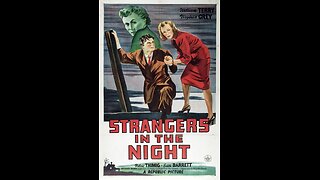 55:42
55:42
Classic Films & Movies Archive
11 days agoStrangers in the Night (1944) | Directed by Anthony Mann
200 -
 34:37
34:37
vivafrei
3 hours agoLive from Lugano Switzerland, Plan B RECAP with Matt Kohrs! BOOYA!
24.1K7 -
 46:25
46:25
X22 Report
19 hours agoMr & Mrs X - DoEd Was Used To Brainwash The Children, Trump Shut It Down - EP 13
36.3K21 -
 26:51
26:51
efenigson
2 days agoSwitzerland: Still the Land of Freedom? Samuel Kullman | You're The Voice - LIVE from Lugano PlanB!
27.1K5 -
 1:07:25
1:07:25
Wendy Bell Radio
8 hours agoPet Talk With The Pet Doc
29.4K34 -
 4:45
4:45
PistonPop-TV
8 days agoMazda K-Series V6: Only True Enthusiasts Know About This Engine
21.8K4 -
 19:51
19:51
Stephan Livera
3 days ago $9.78 earnedStephan Livera hosts Plan B Podcast in Lugano
47.9K1 -
 1:08:45
1:08:45
DeVory Darkins
1 day agoLetitia James drops frantic speech after pleading not guilty as Canada gets NIGHTMARE NEWS
120K54 -
 1:25:16
1:25:16
efenigson
2 days agoDigital Money or Digital Prison? - Nick Anthony | You're The Voice - LIVE from Lugano PlanB Forum!
35.7K6 -
 16:00
16:00
Demons Row
18 hours ago $12.48 earnedBIKERS OF FLORIDA 💀🏍️ Outlaws, Warlocks, Mongols & the Wild South
31.7K13
